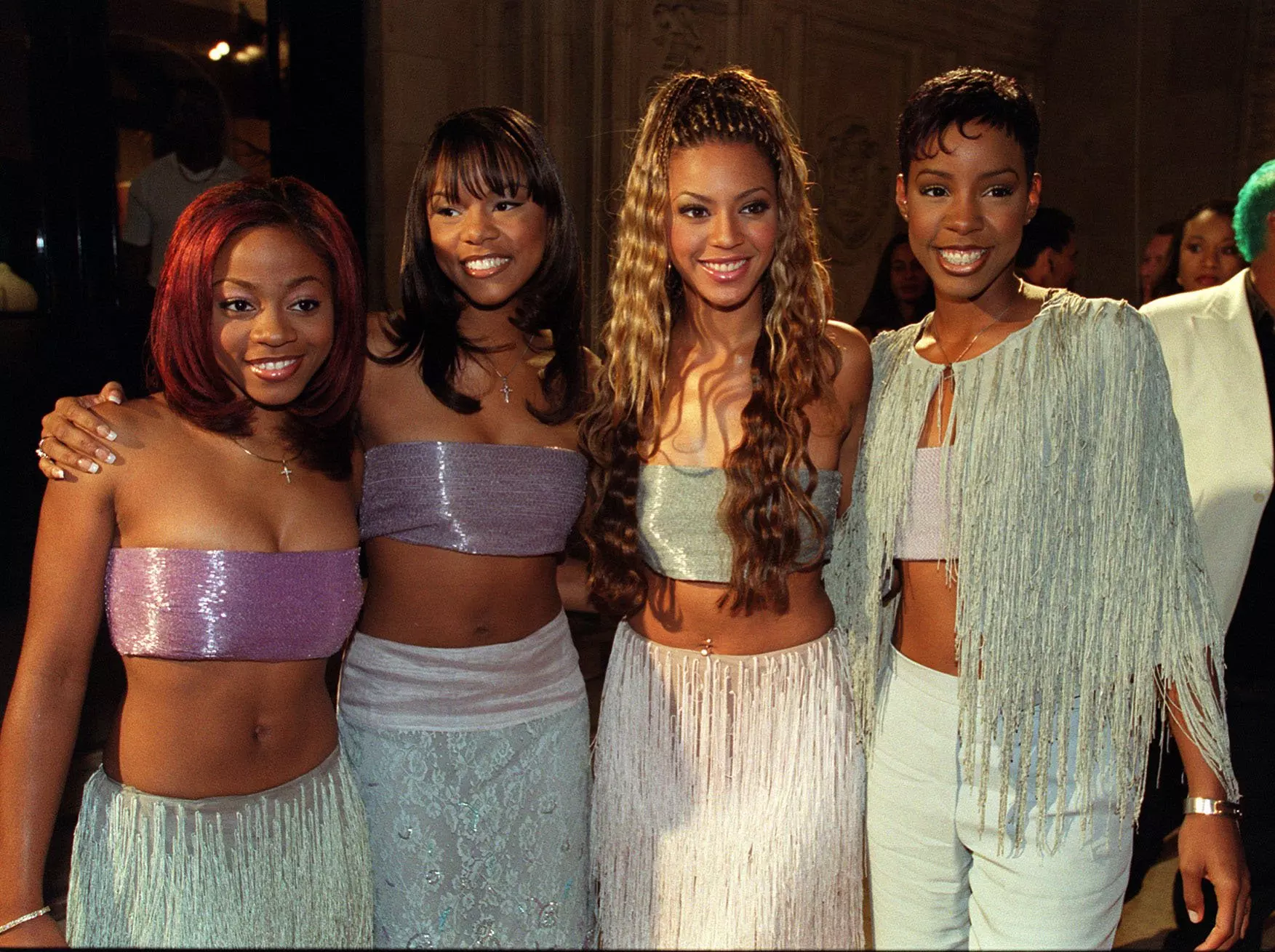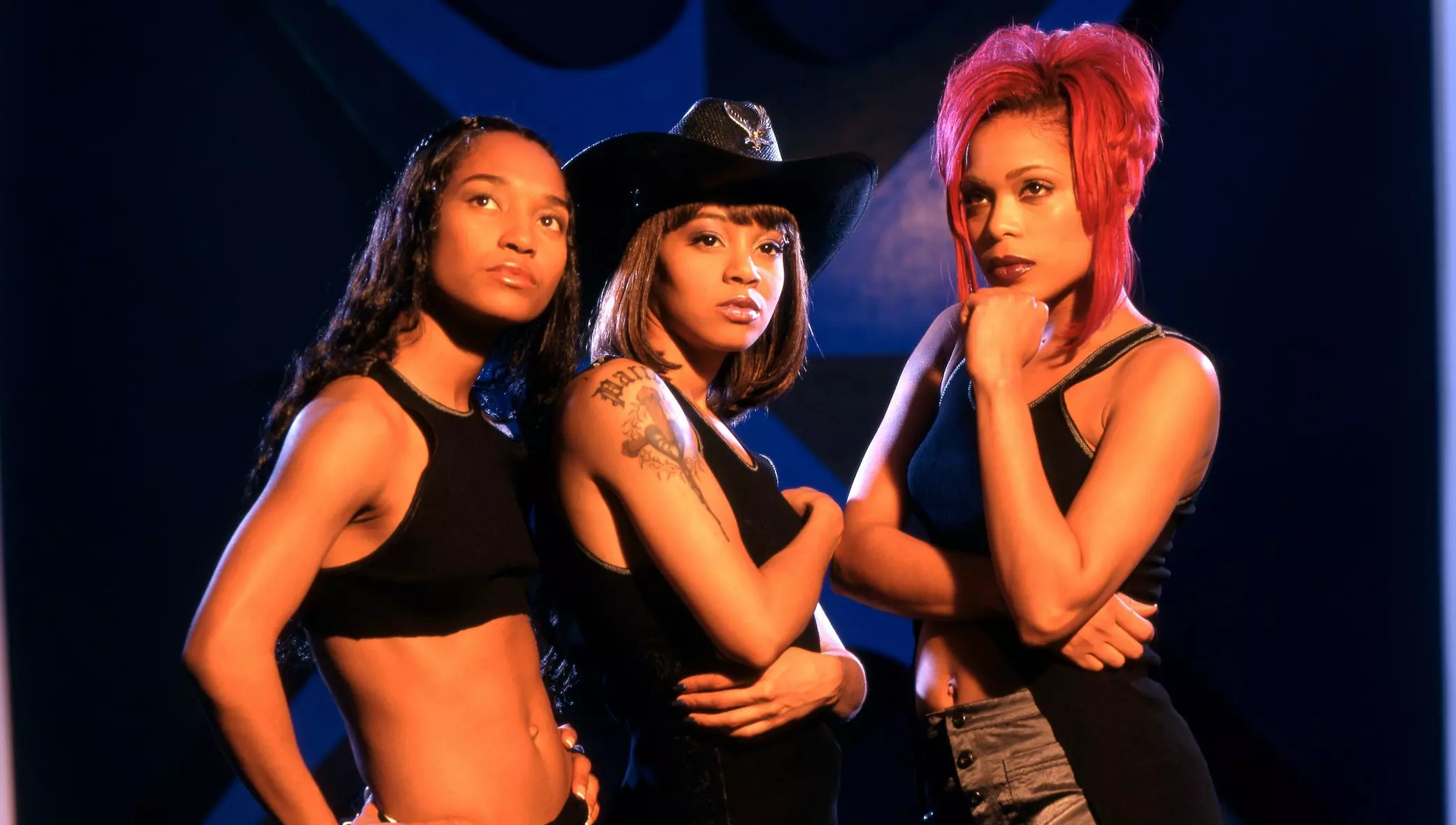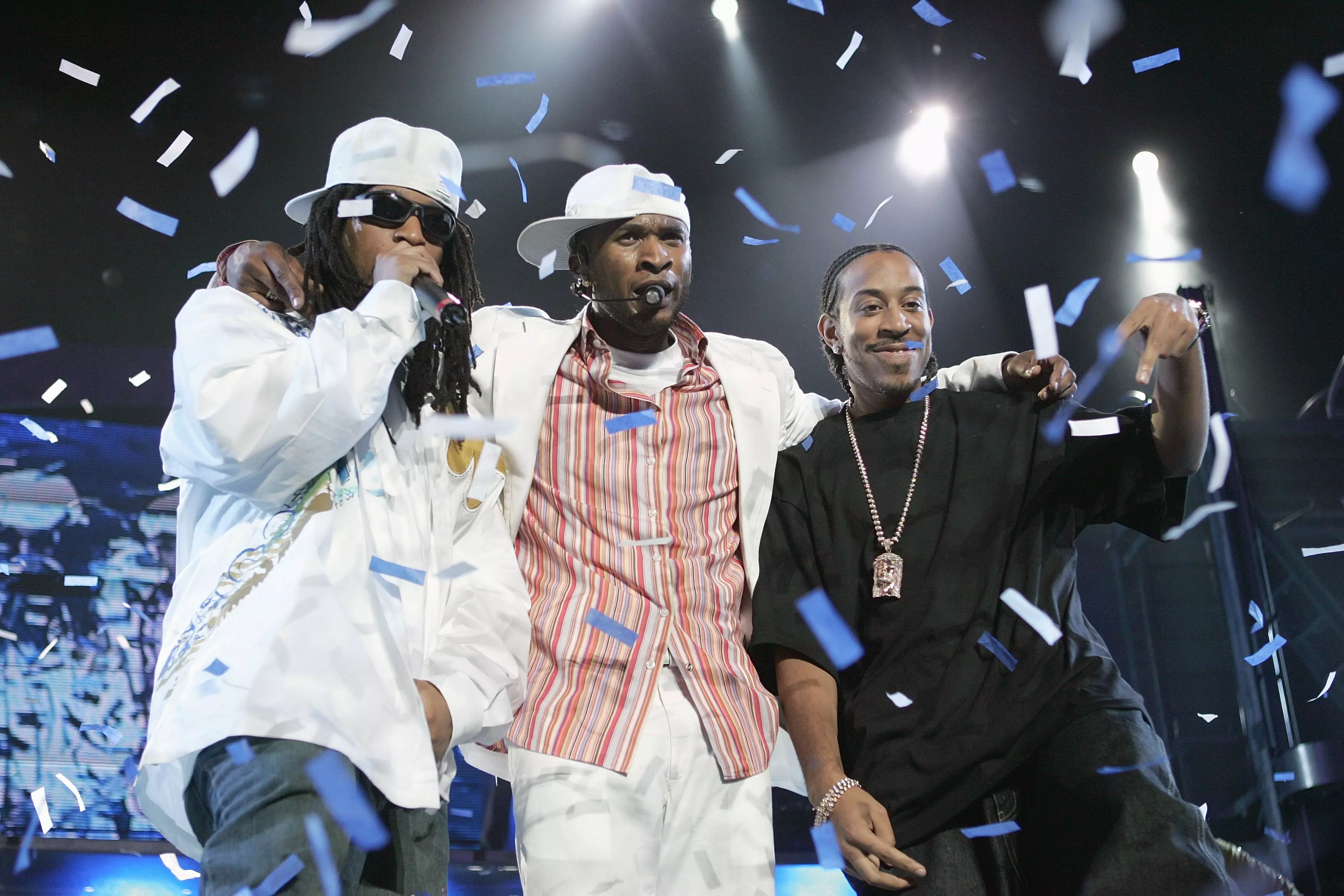Photo: TARA ZIEMBA/AFP via Getty Images
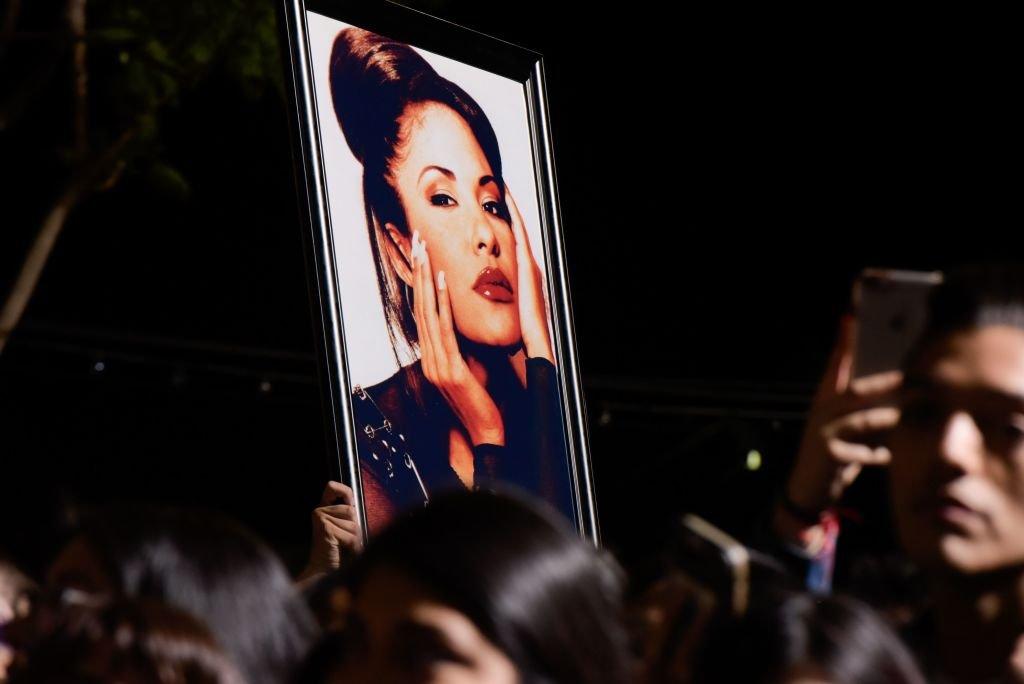
Fans remember Selena during Hollywood Walk of Fame ceremony in 2017
news
Selena Forever: Remembering The Latin Pop Icon 25 Years Later
On the 25th anniversary of her passing, the Recording Academy honors Selena via an industry round-table tribute featuring the artists, creatives and journalists she inspired through her art
Few artists have transcended genres, decades, languages, cultures and borders like Selena. Born Selena Quintanilla in Lake Jackson, Texas, and reared in the state's Corpus Christi area, the iconic singer is one of the most influential and most successful artists in the wider Latin pop canon.
In her early days, she became a pioneer in the then-male-dominated Tejano music scene, a genre she helped mainstream when she won the GRAMMY for Best Mexican-American Album in 1994 for her 1993 live album, Selena Live! It marked her first, and only, career GRAMMY win and the first time a female Tejano artist won the category, earning her the undisputed title of Queen of Tejano music. It was only one of many accolades for the legendary singer.
In her short-lived solo career—she released five studio albums between 1989 and 1995—Selena would establish an ever-lasting sound that spanned languages and styles and resonated with fans across a spectrum of cultures and ethnicities. Her multiplatinum 1994 album, Amor Prohibido, gave early indications of her cross-cultural crossover appeal. In addition to topping the Top Latin Albums and the Regional Mexican Albums charts, Amor Prohibido became a top 30 hit on the all-genre Billboard 200 chart. It also received a GRAMMY nomination for Best Mexican-American Performance and spawned four chart-topping hits that conquered the Billboard Hot Latin Songs chart: "Amor Prohibido," "Bidi Bidi Bom Bom," "No Me Queda Más" and "Fotos Y Recuerdos," all considered signature Selena classics today.
She would later go on to fully establish her mainstream crossover appeal with Dreaming Of You, her final album, released posthumously in July 1995, just three months after she was murdered by a former employee. The album would debut at No. 1 on the Billboard 200 chart in the U.S., becoming the first predominately Spanish-language album to accomplish that feat. It would ultimately prove the full potential of just how far the international star was poised to go.
Selena's reach expands far beyond music, too. A multifaceted businesswoman, she owned and operated two boutiques, called Selena Etc., across Texas, with several other locations across Latin America in the works. As a budding fashion designer, she regularly wore her own designs while performing onstage: Her iconic purple jumpsuit she wore at her final concert in 1995 remains an eternal look. In 2016, MAC Cosmetics released a makeup collection inspired by and in honor of Selena. Selling out within a day, the collection is now considered one of the best-selling MAC celeb collaborations of all time. MAC will be releasing a second Selena capsule collection this April.
The story of Selena, forever immortalized in the 1997 biopic starring a then-rookie Jennifer Lopez in the career-making titular role, is one that's continued since her untimely death in 1995. She has since inspired a new generation of artists and fans alike, who carry on her legacy through music, art and fashion, three areas in which she pushed the envelope with her unique style and vision. Much like her music lives on to this day, so too does her never-ending influence.
On the 25th anniversary of her passing today (March 31), the Recording Academy honors Selena via an industry round-table tribute featuring the artists, creatives and journalists she's inspired throughout the decades through her music and art.
The quotes and comments used in this feature were edited for clarity and brevity.
<style>.embed-container { position: relative; padding-bottom: 56.25%; height: 0; overflow: hidden; max-width: 100%; } .embed-container iframe, .embed-container object, .embed-container embed { position: absolute; top: 0; left: 0; width: 100%; height: 100%; }</style><div class='embed-container'><iframe src='https://www.youtube.com/embed//dvfZ95ueOcQ' frameborder='0' allowfullscreen></iframe></div>
She Was A Genuine Soul
Kacey Musgraves (GRAMMY-winning artist; in 2019, she covered Selena's "Como La Flor" at the same site of the Tejano legend's final concert in 1995): Selena had an innate talent for taking something classic and traditional and shaping it with her modern voice. I love when someone has the vision to take something that's been done a million times and knows how to freshen it up in a way that speaks to their generation and also older generations. It's a quality that truly brings people of all ages together.
Selena was an entrepreneur and woman of business, a songwriter, an iconic vocalist, a trendsetter, and her fashion sense was way ahead of its time. But the attribute I admire most about her was her ability to be real—unabashedly genuine across the board. Being in the spotlight, especially from a young age, can bamboozle people into feeling like they have to shift into something different when the cameras are on. Without ever knowing her, I feel like I can say she never did.
Linda Wilvang (Senior Director, Awards and Latin Genre Manager at the Recording Academy): I have always been attracted to artists who push the envelope, artists who are not conventional, and Selena was one of those artists. She elevated Tejano music to a new high. She successfully blended other musical styles with Tejano and made it her own. She proved to me that you can succeed without compromising your core values, without changing who you are. You can work in any industry and still be real.
John Dyer (photographer; in addition to photographing Selena for several magazine covers in the early '90s, he has contributed images to the Selena Forever/Siempre Selena installation on display at McNay Art Museum in San Antonio, Texas): I spent the day before the shoot setting up several backdrops in the studio so I could photograph her in a variety of situations and costumes ... She jumped out of her car with a big smile. A naturally beautiful, young Latina with jet-black hair, flawless skin, and a perfect figure. She opened the hatchback. It was crammed full of her performing costumes, many handmade, all of her own design …
For the cover [Mas Magazine, 1992], we shot in front of a gray background. Then we moved in front of a red curtain above a black and white checked floor. We ended outside the studio against a white seamless in the warm afternoon light. Selena's quick smile, infectious laugh, and unending energy made her a pleasure to work with …
In early 1995, Texas Monthly called and wanted to do a spread on Selena. By now, she had achieved incredible fame and transcended the boundaries of the Texas music scene.
We met at the Majestic Theater in San Antonio, a favorite place of mine. She had just finished two exhausting days of shooting TV commercials for a corporate sponsor. She was tired. I had brought a beautiful handmade jacket for her to wear. I posed her in the alcove on the mezzanine of the theater where the light is particularly nice. She was subdued and pensive. A far cry from the ebullient, excited young singer I'd photographed three years earlier. Later I thought her mood might have been an eerie harbinger of what was to come.
Between when I photographed her at the Majestic and the Texas Monthly article coming out, she was killed. The art director, my old friend DJ Stout, used one of the more somber shots I had done for his cover chronicling her death. He sent me a handwritten note not too long after the issue appeared saying the cover with my photograph of Selena was one of the strongest he'd ever done. It's a cover I would rather not have had.
She Represented A Different Kind Of Beauty
Patty Rodriguez (Senior Producer for On Air With Ryan Seacrest; her Los Angeles-based children's book publisher, Lil' Libros, released a bilingual picture book biography about Selena; in 2015, her online petition helped launch the Selena-inspired MAC Cosmetics makeup line): She was unapologetically Latina. She was so proud of her identity and carried it with her everywhere, and that is what resonated with us. Growing up, we had no one to look up to, so then here comes a woman … with black hair, brown skin, that sounds and looks like us. Her flamboyant onstage costumes were designed and created by her, an example of the Latina make-it-happen-with-the-limited-resources-we-have attitude. Her trademark red lipstick and hoop earrings are what you see in our neighborhoods, and she took that with her to the world stage.
Latina women purchase beauty products three times more than any other group, and it wasn't until MAC released Selena's collection did we feel seen; it's unbelievable to me that it took this long. But I see why: The men and women who grew up with Selena are now adults. She taught us to be unapologetically Latinx, and we are no longer afraid to ask for what we deserve. Thank you Selena.
Read: Remember When? Selena Wins Big At The 36th GRAMMYs
Leila Cobo (VP Latin Industry Lead at Billboard): I think Selena's particular brand of beauty was essential to her success. In a world (still) of telegenic, imported Latin pop stars, and a time when the standard for Latin beauty were largely white soap opera actresses, Selena was an anomaly. Selena embraced her body, her hair, her voluptuousness. She was so real. I would say that, for the first time, a new generation of U.S.-born Mexican-Americans and Latinas overall had a star that they could intimately relate to at all levels. She was their peer. She was a role model for an entire generation of Mexican-American girls who didn't have a role model before. This was key. Only Jenni Rivera, many years later, would come close.
<style>.embed-container { position: relative; padding-bottom: 56.25%; height: 0; overflow: hidden; max-width: 100%; } .embed-container iframe, .embed-container object, .embed-container embed { position: absolute; top: 0; left: 0; width: 100%; height: 100%; }</style><div class='embed-container'><iframe src='https://www.youtube.com/embed//k9dt1f4MxFM' frameborder='0' allowfullscreen></iframe></div>
Kate Carey (Head of Education at McNay Art Museum in San Antonio, Texas; Exhibition Curator for Selena Forever / Siempre Selena photography installation): In selecting the photographs on view in Selena Forever/Siempre Selena, I had an opportunity to look through many photos from two different shoots with photographer John Dyer. I recognize that he is a gifted photographer, but her beauty and winning personality were revealed on every frame. I can see why brands wanted to align with her image. Yes, she is beautiful, but she also came across as very real—just like me or you.
Pabllo Vittar (Brazilian activist, artist and drag queen): Selena embraced her beauty the way it was, not trying to follow the "beauty rules." That's important and it resonates till now, as you can see more and more people feeling good with their bodies and how they look. We are all beautiful in our own way and there's nothing that can tell us otherwise.
Honey Andrews (transgender performer, based in Corpus Christi, Texas, who's worked as a Selena impersonator for nearly 15 years; "Selena was definitely one of my inspirations and idols and someone I definitely look up to when I began my transition," she says): Selena's fashion was definitely ahead of its time, and she was always up to date on the latest trends. She was an amazing fashion designer. Her amazing onstage costumes are very recognizable, and she has definitely impacted today's women in the music industry; till this day, a lot of women credit her for the fashions they wear ontage and even for just a casual day. She definitely impacted me because she taught me that you can be sexy, even if you're not a size zero. You can still be sexy by having curves, and she definitely embraced her own beautiful body and curves.
Girl Ultra (R&B artist from Mexico City): I feel like she embraced her curves and her body shape so much. She was breaking paradigms about the female body and Latina bodies as well. As Latinas, we have big caderas [hips] and juicy thighs, and when it comes to fashion, it's hard to find the right sizes. And by her designing her own outfits and crafting them, she was breaking all this body stereotyping back in the day.
Javiera Mena (Chilean electropop artist): She transmitted good vibes with her smile, her eyes, her body—we could feel it. We all feel it when we watch her videos, too. It makes you connect, and that's a real beauty. Also, her mouth and lips were very iconic. I understand MAC [Cosmetics] used it for a [beauty] line, with her big and thick lips, something that influenced me and all the people!
Her Fashion Was Ahead Of The Time
<style>.embed-container { position: relative; padding-bottom: 56.25%; height: 0; overflow: hidden; max-width: 100%; } .embed-container iframe, .embed-container object, .embed-container embed { position: absolute; top: 0; left: 0; width: 100%; height: 100%; }</style><div class='embed-container'><iframe src='https://www.youtube.com/embed//GkcSXm3YLAU' frameborder='0' allowfullscreen></iframe></div>
Kate Carey (McNay Art Museum): Selena Forever/Siempre Selena was conceived at the McNay Art Museum in tandem with the 1990s-focused exhibition, Fashion Nirvana: Runway To Everyday. Like many of the designers on view in Fashion Nirvana, Selena took fashion risks, embraced body-conscious ensembles and carefully crafted her image. That brand of fearlessness and innovation characterized the 1990s and Selena's fashion sense. The sparkly bustier tops, revealing performance ensembles and cool leather jackets cement her reputation as a style icon, but she presented an authentic and accessible image by wearing jeans, boots and white T-shirts. Personally, I'm a big fan of the accessories: the newsboy hats or big silver belts. She absorbs these elements of menswear and represents them as both tough and feminine. That, to me, is '90s fashion in a nutshell.
Javiera Mena (artist): I love her aesthetic and style. It is a great influence for me. I have been influenced by the high-cut Texan jackets with large shoulder pads and the glitter and reflective accessories. Also, her jeans and thick eyebrows. She was a pioneer. She had an elegance that brightened without limits when she was on stage.
Christian Serratos (actress; she stars as Selena in the forthcoming Netflix series, "Selena: The Series"): It's amazing to see how many artists, of all backgrounds and genders, have been inspired by Selena. It was her fearlessness and creativity that made her an icon. There are few people who have the power to be remembered by a color or a feeling, or who have become synonymous with an accessory like the hoop earring. The last time I saw what Selena did to the red lip was Marylin Monroe, another icon. I see Selena's influence when I walk down the street, and I know I'll continue seeing that influence for many more generations.
<style>.embed-container { position: relative; padding-bottom: 56.25%; height: 0; overflow: hidden; max-width: 100%; } .embed-container iframe, .embed-container object, .embed-container embed { position: absolute; top: 0; left: 0; width: 100%; height: 100%; }</style><div class='embed-container'><iframe src='https://www.youtube.com/embed//c2SfijID-BI' frameborder='0' allowfullscreen></iframe></div>
María (Lead singer of Los Angeles-based Spanglish indie rock/indie pop band, The Marías): My first memory of being introduced to Selena was in her biopic film. Thereafter, I listened to her music and watched her music videos nonstop. I remember when I was around 5 or 6, I wanted to wear a bustier just like Selena. I wasn't even old enough to wear a bra! But my mom, being the angel she was, found some tiny training bras at the store and sewed little beads on them for me. This was my earliest memory of being directly influenced by fashion. When I was old enough to really understand, her style represented confidence in your own body. The fact that she could so freely and confidently dance around in a bustier, against her father's wishes, was inspiring. She wasn't doing it for sex appeal, in my opinion. She was doing it because she simply wanted to feel free and in control of her body.
Raquel Berrios (Puerto Rican designer and co-founder/singer of Buscabulla): Her style sense was very balanced and cool. It was sexy without being slutty, feminine but not fragile. She really created a strong yet down-to-Earth example for Latinas. I personally strive to include that balance in the way that I like to style myself and portray myself as a Latina artist.
She Was A Multifaceted Businesswoman
Christian Serratos (actress): Selena's ability to create new avenues for herself and work hard to achieve them is inspiring and relatable. We all have the ability to design our own paths. Strong women like Selena show us the power of never giving up and handling adversities with grace.
Jennifer D'Cunha (Global Head of Latin Music at Apple Music): Selena had an entrepreneurial spirit and extended her self-expression beyond music and into fashion, design and film, while staying true to her personal brand and identity. Her confidence, authenticity and distinctive personal style still resonate and inspire fans all over the world. She had the courage to reinvent herself and the work ethic and raw talent to be successful at anything she committed to. Selena ventured into uncharted territory by expanding her realm of influence outside of music, well before celebrity clothing lines were commonplace and brand partnerships were the norm.
Tatiana Hazel (Mexican-American, Los Angeles-based singer-songwriter, musician, producer and fashion designer): Nowadays, several musicians are starting their own makeup lines, fashion brands, etc. But Selena was definitely a pioneer for this kind of business model. She really was capable of anything she set her mind to accomplish, and I believe that is why she was able to break so many barriers through determination. Also, not only was she determined, but also talented at everything that she pursued.
She Was A Voice For Latinx People Around The World …
<style>.embed-container { position: relative; padding-bottom: 56.25%; height: 0; overflow: hidden; max-width: 100%; } .embed-container iframe, .embed-container object, .embed-container embed { position: absolute; top: 0; left: 0; width: 100%; height: 100%; }</style><div class='embed-container'><iframe src='https://www.youtube.com/embed//e0MhLqGQMXg' frameborder='0' allowfullscreen></iframe></div>
Adrian Quesada (GRAMMY-winning guitarist/producer and founding member of GRAMMY-nominated duo Black Pumas; he served as the music director for the Selena For Sanctuary tribute concert series in 2018 and 2019): She had a huge impact and influenced many, and still does to this day, because representation is very important for communities and cultures that haven't always had an icon that transcends boundaries to look up to. For people that looked like her, spoke like her, came from places like she did, it let them know that they could do it, too. I feel like her influence continues to grow exponentially, even for generations who weren't alive when she was. She gives hope and inspires because she was bigger than any one genre, culture, region and country, and was a positive role model at that.
María (artist): When an artist as undeniably talented as Selena comes along, deep down it doesn't matter where she's from. I became a fan of Selena when I was really little, after watching the movie [Selena] with Jennifer Lopez. It didn't matter to me what Latin country she was from. What mattered to me was that she was Latin and that she was accomplishing so many amazing things. Of course, Latin communities take pride in their countries and flags, but what unites us all is that we're Latin, that we have similar values and morals and beliefs. I'm from Puerto Rico and my father is from Spain, but growing up, all of my friends were from different Latin countries: Venezuela, Colombia, Mexico, Brazil, Uruguay, Guatemala and more. We learned from each other's unique cultures, but deep down we were all the same.
La Doña (Mexican-America multi-instrumentalist, producer and singer-songwriter): I think the reason her music was so successful with such a diversity of Latinos is because Tejano music and all of the music she is founded in are tremendously diasporic cultural practices. That means that when she revolutionized Tejano music and prepared it for the pop platform, she is representing and reiterating ancient practices that are not confined to the region of Texas. Similarly, when she presented her style of techno-cumbia, she was not only appealing to a young brown audience, who was excited by their contemporary synthetic sounds mixed with familiar and familial rhythms, but also representing Afro-Latinx and Afro-indigenous art forms that have informed all of the musica tipica and popular of Latin America. This commitment to tradition and bravery in transporting it into a new arena is definitely one of the reasons that Selena's music spoke to such a diversity of Latinx fans across the world.
Isabela Raygoza (Latin Music Editor at SoundCloud): Selena's musical moxie embodied the beautiful complexities of biculturalism. With her insatiable mix of electro-cumbia, ranchera and pop-flavored R&B, Selena went on to represent the experiences and lifestyles of her compatriots: Mexicans (native, first-, second-, third-gen), Texas dwellers and beyond. She was born in the U.S. to Mexican-descendent parents, and she didn't speak fluent Spanish, similar to Chicano rock star Ritchie Valens before her and countless others of Latinx immigrant backgrounds. Brown-skinned, family-oriented, and of humble beginnings, Selena, the pop icon, became the voice of the Latinx diaspora.
Without Selena's formidable contributions to Latin pop, J.Lo or Becky G's musical career might've not been what they are today: two U.S.-born Latinas who, too, grew up speaking predominantly English, who embrace their biculturalism with endearment and pride and who uphold the enduring legacy left behind by the Queen Of Tejano Music.
Although Selena's tragic death cut her potential short, she nevertheless managed to leave an indelible mark on Latin pop, and she will surely continue to do so for newer pop stars to come.
<style>.embed-container { position: relative; padding-bottom: 56.25%; height: 0; overflow: hidden; max-width: 100%; } .embed-container iframe, .embed-container object, .embed-container embed { position: absolute; top: 0; left: 0; width: 100%; height: 100%; }</style><div class='embed-container'><iframe src='https://www.youtube.com/embed//HIBYaeYQF0k' frameborder='0' allowfullscreen></iframe></div>
Raquel Berrios (artist, Buscabulla): Selena was right there doing her Latin thing in the most unique way in a time when we really didn't get to see a lot of Latina role models on mainstream media. She set such a cool example of a super talented, down-to-Earth Latina woman. I loved how she broke language barriers. That was a huge inspiration for me as an artist.
… But She Was A Role Model For All People
Kali Uchis (GRAMMY-nominated artist): Selena will forever be iconic because that's what she was. Her being taken from us is one of the greatest tragedies known to man, but Selena's raw star power, persistence and dedicated fan base are the reason her legacy will be immortal. As a Latin-American woman, she made me proud to be multicultural when at times it never felt I could be American enough or Colombian enough. I've always listed her as one of my greatest inspirations, because she was the first multicultural global sensation on Earth.
Honey Andrews (performer/Selena impersonator): Selena's music and art influenced me in so many different ways. Her music is timeless. Selena was a piece of art herself. She was very diverse with her wardrobe as well as her music. She means so much to me as a person because she taught me that the impossible is always possible. She was a one-of-a-kind artist and she was such a great cultural figure for the Hispanic and Latino and Mexican-American community.
Marissa Gastelum (Latin Music Artist Relations at Apple Music): Selena is the only Latin artist to have broken cultural barriers the way she has passed the grave. When you have artists like Beyoncé and Kacey Musgraves performing covers of Selena or Drake wearing a shirt with Selena, you know she has transcended culture. Her spirit lives on through her music, and the Selena movie helps new generations get to know her story and connect to her music. Her album Dreaming Of You is a gem, and those songs are timeless. I think these artists connect to Selena because of her music and her sense of style. She was the epitome of cool and an incredible performer. Selena showed that a woman can be strong and graceful and can command a stage and be sexy at the same time.
iLe (GRAMMY-winning Puerto Rican singer/artist; member of Calle 13): I think that when you start something that's so good there is no reason to stop. Selena was that dreamer that we all are when we were young. Listening to her songs today is revitalizing. She and her music reminds us about the importance of being alive, enjoying every moment and to keep dreaming.
Suzy Exposito (Latin Music Editor at Rolling Stone; her former punk band, Shady Hawkins, covered Selena's "Como La Flor" in the past): I was always a sucker for a forbidden romance like that of [Selena's hit song] "Amor Prohibido." Inspired by love letters Selena discovered from her grandmother to her grandfather—a young maid who fell in love with the wealthy son of her employers—it's a heartrending tale of two young sweethearts, who against the conventions of society, flout their class disparity with love. Selena told it with such verve and conviction that even as a 5-year-old, it just rocked me to my core. Yet the context changed as I grew older, and I began to understand that the love I so desired would probably look very different from that of my parents or most of my peers. So when I came out as a bisexual woman 10 years ago, I braced myself to go through it alone; but the biggest surprise and reward of coming out was that, in fact, I was far from it! In being more present in New York City's LGBTQ community, whether by attending protests, drag nights and punk shows, I was able to find a beautiful community of Latinx people who grew up just like me: bilingual children of immigrants, whose resilience and great capacity for love transcends all kinds of borders.
Suzy Exposito (center) performs with her band, Shady Hawkins
Adrian Quesada (artist/producer): Being from a South Texas border town, cross-cultural and bilingual feels pretty normal and felt so at the time of her music. But I think it gave hope that it could be bigger than that and reach the masses through multiple avenues. They updated the Tejano sound a bit with modern, at the time, R&B influences, which helped it cross over and resonate with people who weren't familiar with regional Tex-Mex music and did so in a way that was seamless and natural. I do believe she was well on her way to even bigger crossover territory, with collaborations with people like David Byrne, and would have continued to push the envelope musically and culturally to this day. She was just beginning to really branch out before her life was tragically taken.
She Broke Barriers And Opened Doors For Next-Gen Artists
Angie Romero (Senior Editor, U.S. Latin Music Culture and Editorial at Spotify): Back in the day, artists like Selena had to fight hard against systemic barriers, many of which still exist today. But because of artists like Selena, Gloria Estefan and others, the door for the next generation has been cracked open, and it will forever stay open. Young Latinas can dream of doing anything they want to do in the world, and they don't ever have to stay inside a box, either — they can do it all, just like Selena did.
iLe (artist): Society makes us get used to the same things so much that we don't notice what we're seeking until it suddenly appears. We as women have a voice that should be heard and acknowledged. Selena became a female figure that Tejano and Latin pop music needed and I think she succeeded by not being afraid of being herself.
Jennifer D'Cunha (Apple Music): Selena broke barriers for women in Latin music. She created her own lane in the male-dominated Tejano music scene, and successfully took the genre to new heights. Whether it was cumbias, traditional Tejano or pop, she made her unique sound mainstream in Latin music. She thrived not by trying to conform, but by pushing the boundaries, following her intuition and playing by her own rules. Her spirit lives on and continues to inspire.
Pabllo Vittar (artist): For me, she was the first Latin diva going global! She was gorgeous and unique! I was born a year before she passed away, but I remember my mom listening to her music and I could watch her videos some years later. She was an icon that comes to mind when we talk about letting the uniqueness of your culture shine through you, and she was an example of how you can take a specific and regional rhythm and work your way into the industry.
Jesse Baez (Guatemalan contemporary urban/R&B artist): I think the most important thing people should know is that you can live forever through music. You know, Selena passed away when she was 23, so she was incredibly young, and in spite of that, she's still relevant in 2020, maybe more than before. I think people should know that you can live forever if you do something with passion and enjoy what you do—that's what I would take from her.
Girl Ultra (artist): She had such a big female strength that still empowers upcoming generations. She embraced her roots and her femininity in ways that Mexican culture was not very used to. She also gave Mexican weddings and parties many anthems.
La Doña (artist): Selena was able to supersede systemic barriers for many different reasons; one of those is her raw talent and passion. It is impossible to ignore the sheer amount of energy she put behind not only every song and every performance, but also all of her other creative ventures. Unfortunately, however, we have seen that that is rarely enough for a young star such as Selena to achieve success in the way that she did.
I think that a huge contributor to this success was the support and contributions of her family. Though working with one's family is never simple or easy—speaking from the perspective of someone who grew up playing Tejano music in a family band—it is also grounding and supportive in a way that you won't experience from a different type of team.
The last element of this perfect storm that vaulted Selena into super stardom is that the music industry needed her. The huge Latinx population within the United States needed her; the market existed but it was largely ignored until Selena revealed it, and then there was no going back. She opened a door to a market and created an entire Latinx enclave within the pop industry that would always exist as her legacy.
Her Music Still Strikes A Chord Today
<style>.embed-container { position: relative; padding-bottom: 56.25%; height: 0; overflow: hidden; max-width: 100%; } .embed-container iframe, .embed-container object, .embed-container embed { position: absolute; top: 0; left: 0; width: 100%; height: 100%; }</style><div class='embed-container'><iframe src='https://www.youtube.com/embed//FwZTgDjRLM0' frameborder='0' allowfullscreen></iframe></div>
Kate Carey (McNay Art Museum): "Como La Flor" is one of the greatest songs ever, and if I have done anything right as a parent, it is that my kids know this song by heart.
Kali Uchis (artist): My favorite songs are "No Me Queda Más" and "Como La Flor"—because I like to dance and cry.
Angie Romero (Spotify): It's so hard to choose a favorite! But "Como La Flor" is just a perfect song, with the perfect metaphor, and it was also special to her and the band because it was their breakthrough hit in the U.S. and Mexico, reaching No. 6 on Billboard's Hot Latin Songs chart [in 1992]. When she sings the opening notes of that song, live at the Astrodome, and drags out the word "flooor," then moves her hand beautifully like a flamenco dancer, it gives me chills and makes me teary-eyed every time! I also just love that line about "me marcho hoy, yo se perder" ["I'm leaving today, I know how to lose"]. It's a different take on a broken heart in the sense that you aren't just wallowing in sadness, but you accept it and move on, similarly to other iconic songs that I love that also take the high road, like "I Can't Make You Love Me" by Bonnie Raitt.
iLe (artist): I have many Selena classics that I love, but I would have to say "Techno Cumbia" [is my favorite] because it reminds me of a little dance that I used to do with my cousin, Beatriz, when we were kids.
Jesse Baez (artist): I feel like "No Me Queda Mas" is the only ballad that I can go back to and not feel weird about liking. It just became a permanent song in connection to my childhood. Even though it's sad, and there are a bunch of other Selena songs that I also love, I like how this song goes against everything else I tend to like, so I will pick that song forever.
Jennifer D'Cunha (Apple Music): Selena's [2003] Live: The Last Concert is one of my favorite concert films of all time. Selena's charisma onstage, her vocals, the energy from her fans and that fierce purple jumpsuit make this one of the most iconic live performances ever.
Leila Cobo (Billboard): "Amor Prohibido" is my favorite Selena song. It's a beautiful story, a timeless song, timeless lyrics. It's a song that will forever be relevant.
A New Generation Of Artists And Fans Continues Her Legacy
Leila Cobo (Billboard): While Selena's music traveled internationally, her real influence lies in her impact within the United States. Because she was a homegrown star, she was widely recognized both by Latin and non-Latin fans. Selena was an anomaly: Bilingual and bicultural, she not only looked like her fans, she was like them. That relatability was transformative for Latin pop culture.
Thanks to Selena, for the first time, perhaps ever, U.S.-born Latinas had a role model they could aspire to be. Two generations later, Selena's impact is tangible. Dozens of prominent figures—from Becky G to Jennifer Lopez to Leslie Grace to Selena Gomez—point to Selena as their direct influence. Selena's legacy has been fundamental in creating a new movement of U.S.-born Latin artists who today, 25 years after her death, are collectively reaping success and still naming her as the precursor of their achievements.
Girl Ultra (artist): I feel like any Latina making music since then is part of her legacy. We're fighting for the same cause: breaking paradigms about how ''Latino music'' should sound or look like and breaking with the objectification and the so-called "fetish" of Latinas all over the world.
Linda Wilvang (the Recording Academy): Selena made Tejano music cool! Moreover, she was able to fiercely and creatively convey her passion for the genre, and this you can attest by watching any of her performances. She truly loved her craft, her fans—she loved life. Selena's legacy has endured to this day and will continue, thanks to her family and fans who lovingly have kept her music and spirit alive for 25 years and beyond.
Marisol "La Marisoul" Hernandez (Lead vocalist of GRAMMY-winning Los Angeles band La Santa Cecilia): When I first witnessed Selena, I was blown away by her amazing vocal skills. It was so inspiring to see a brown, curvaceous woman be so confident and commanding onstage. I could see myself in her, and that was so empowering! At that time, as a teenager, I, too, had dreams of one day becoming a singer myself. Her beautiful music introduced me to the Tejano music genre, which I began to follow. I admired her presence in a mostly male-dominated music scene and soon became a loyal fan.
Watching her interpret regional Mexican music in Spanish really moved me to continue my personal journey. When I saw an interview with her and [saw] the way she spoke Spanish with her Mexican-American accent, that's what really got me. She spoke the way I spoke. She was a Mexican-American female musician dominating the Tejano, regional Mexican music scene, and at the same time, you could hear in her voice that American R&B style that I would hear later in the [1995 album], Dreaming Of You. That's what made her so special to me and such an inspiration.
<style>.embed-container { position: relative; padding-bottom: 56.25%; height: 0; overflow: hidden; max-width: 100%; } .embed-container iframe, .embed-container object, .embed-container embed { position: absolute; top: 0; left: 0; width: 100%; height: 100%; }</style><div class='embed-container'><iframe src='https://www.youtube.com/embed//p00sU_ZPuGA' frameborder='0' allowfullscreen></iframe></div>
Kate Carey (McNay Art Museum): I love visiting the McNay on weekends when I'm not really working. The first weekend of the Selena Forever/Siempre Selena exhibition at the McNay, my parents were visiting; I wanted to show them what I was working on. We saw visitors throughout the museum wearing Selena fan memorabilia. One older gentleman wore a T-shirt that read, Selena es mi reina [Selena is my queen]. Similarly, a young mother encouraged her daughter to pose like Selena in the photos. I don't know why her music is so timeless, but I know that it is, and it's very obvious to me the reverence Selena fans have for her music and her image.
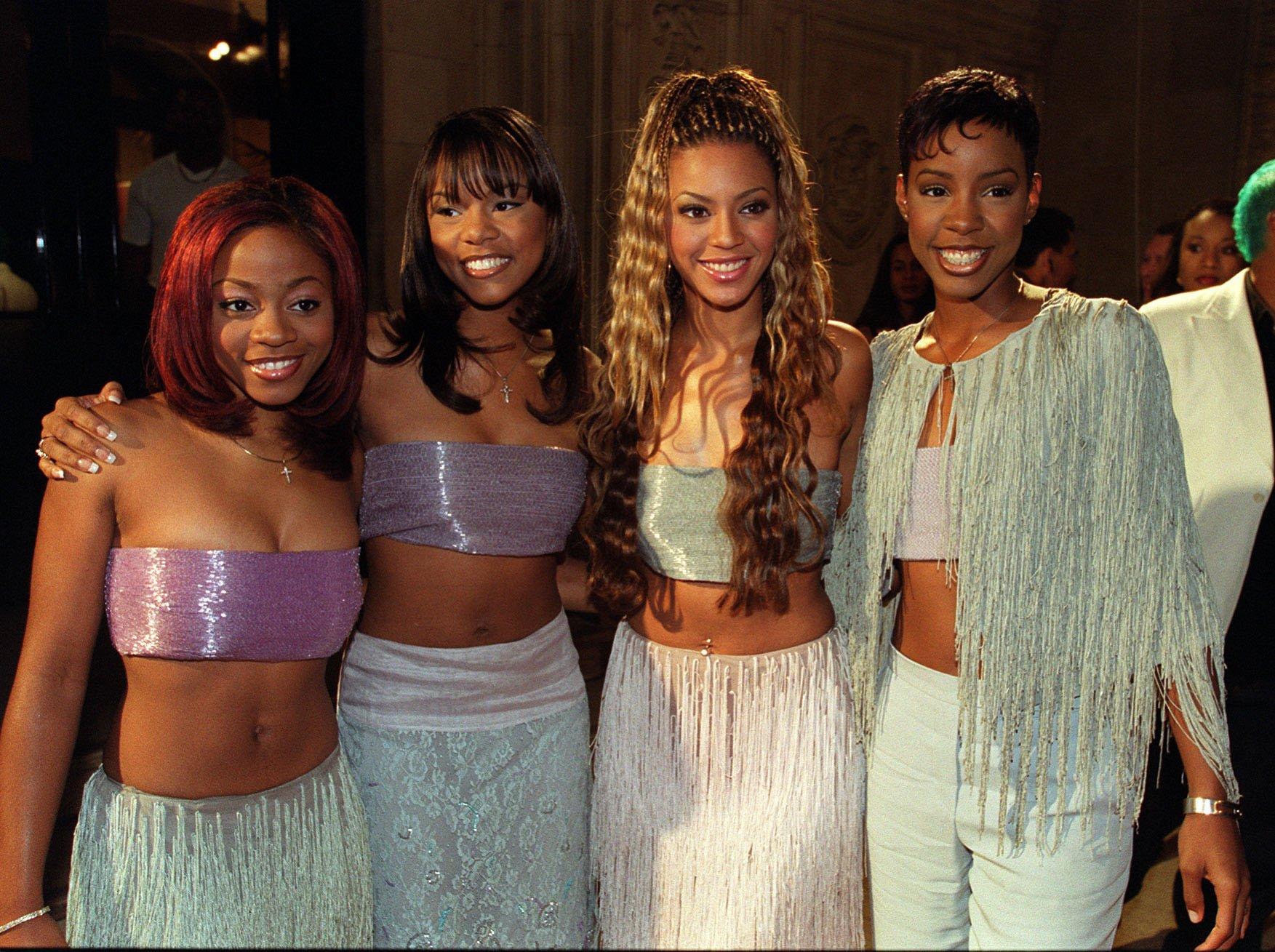
Photo: Michael Crabtree - PA Images/PA Images via Getty Images
list
5 Reasons Why 'The Writing's On The Wall' Is Destiny's Child's Defining Album
From its embrace of experimental R&B production and memorable music videos, to its GRAMMY-winning empowering songs, 'The Writing’s On the Wall' remains a touchstone for fans of Destiny's Child.
In 1997, all-female R&B groups were thriving: TLC already had seven Top 10 hits on the Billboard Hot 100, En Vogue had numerous platinum singles, and Xscape reached No. 1 more than once. Soon, a quartet of teenagers would burst upon the scene and leave an indelible impact.
While Destiny’s Child are now canonical in the world of '90s and early aughts R&B, the group initially experienced spotty success. Their 1997 debut single, "No, No, No (Part 2)" peaked at No. 3 on Billboard’s Hot 100 and was certified platinum. Yet their eponymous album, released in February 1998, only hit No. 67. Their follow up single, "With Me," also failed to set the charts ablaze.
Destiny’s Child's underwhelming chart performances could’ve easily derailed the budding group. Fortunately, the four ambitious girls from Texas had other plans.
Beyoncé Knowles, Kelly Rowland, LaTavia Roberson, and Le Toya Luckett were determined not to become one hit wonders, and quickly went back into the studio to record their sophomore album. Released on July 14, 1999, The Writing’s On the Wall became Destiny’s Child’s highest selling album and spawned some of their most iconic songs — one of which led to the group's first GRAMMY win. Not only did the album establish Destiny's Child as a household name, but it fine tuned the R&B girl group concept to perfection.
"We had no idea that The Writing's on the Wall would be as big a record as it was. Especially worldwide," Beyoncé said in a 2006 Guardian interview.
In celebration of the iconic album's 25th anniversary, read on for five reasons why The Writing’s On the Wall is the defining album of Destiny’s Child’s career.
Its Members Took Creative Control
On their debut album, Destiny’s Child tapped into the neo soul trend popularized by the likes of D’Angelo, Erykah Badu, and Maxwell — artists in their early-to-mid twenties with a maturity the teen quartet didn’t yet have. The references and creative direction clashed with the reality of the group members being so young.
"It was a neo-soul record and we were 15 years old. It was way too mature for us," Beyoncé tol the Guardian.
Heading back into the studio, the girls made sure to eradicate any misalignments and put more of themselves into their sophomore album. In an interview with MTV, the members said The Writing’s On the Wall had a fresher, more youthful vibe because "it comes from us." The quartet's fingerprints are all over the 16 track album: Each member co-wrote at least 50 percent of the album.
"Even at the time, Beyoncé would produce a lot of their background vocals, and she was a leader even at a young age," Xscape's Kandi Burruss said in a Vice interview, reflecting on her work as a songwriter and producer on The Writing's On the Wall. This heightened presence enabled the group to develop lyrics that boldly reflected their opinions and youthful energy. In turn, The Writing's On the Wall netted a run of iconic hit singles.
Read more: Destiny's Child's Debut Album At 25: How A Neo-Soul Album From Teens Spawned R&B Legends
It Pushed R&B Forward
Like its predecessor, The Writing’s On the Wall is very much an R&B album. However, Beyoncé's father Mathew Knowles — who still managed the group at the time — brought in producers who weren’t afraid to experiment. The result was a more commercial album that fused classic R&B with pop influences, creating a sound that was simultaneously contemporary and timeless.
Kevin "She'kspere" Briggs and Burrus (who would go on to co-write and produce TLC’s "No Scrubs") contributed to five of the album's tracks, shaping its overall sound and differentiating it from Destiny’s Child. The duo kept a few elements from the group’s debut effort, including the sing-rapping heard on "Bug A Boo" and "Hey Ladies." With syncopated beats, thumping basslines, and their knack for writing catchy hooks, Briggs and Burrus created R&B records with the perfect blend of chart-friendly accessibility.
On the Missy Elliott produced "Confessions," synthesizers, drum machines, and electronic garbling were layered to create a lush, futuristic backdrop. Further subverting the classic R&B ballad, Elliott paired what sounds like a cabasa to match Beyonce’s cadence throughout the verses which gives her laidback vocals an almost robotic feel. In addition to producing, Elliott’s velvety vocals also appear quite prominently on the chorus, adding to the track’s sonic tapestry.
GRAMMY-winner Rodney Jerkins was tapped to produce "Say My Name." The original beat Jerkins used was two-step garage, a subgenre of UK garage. No one else liked the sound, so he completely revamped the track into the GRAMMY-winning anthem we know today. Jerkins melded funk-inspired guitar and a call and response approach, then modernized them with a shimmery, polished production. This helped "Say My Name" become the group’s most listened to song on Spotify with over 840 million streams. Jerkins has even gone on record to say this is his favorite song he’s produced to date.
Read more: "Say My Name" 20 Years Later: Why The Destiny's Child Staple Is Still On Everyone's Lips
Its Music Videos Praised Black Culture
"For me, it is about amplifying the beauty in all of us," Beyoncé said in a 2019 interview with Elle when asked about the importance of representation. Even before her solo work, the importance of spotlighting Black culture was evident in Destiny's Child's music videos.
In "Bills, Bills, Bills," we see the group play the role of hair stylists in a salon which is an obvious nod to Beyoncé's mother’s longstanding relationship with all things hair. Near the end of "Bug a Boo," the members change into their version of majorette costumes and dance in front of a marching band. Majorettes and marching bands have a vibrant legacy within HBCUs; almost 20 years after this video premiered, Beyoncé revisited this very concept for her 2018 Coachella performance.
It Delivered Mainstream Success
The Writing’s On the Wall was a hit across the charts. The group earned their first No. 1 singles on Billboard’s Hot 100 with "Bills, Bills, Bills" and "Say My Name." Promotions for the latter also reinvigorated album sales and helped shift another 157,000 copies (an impressive 15 percent increase from their first-week sales). The fourth and final single, "Jumpin’, Jumpin’" was released during the summer of 2000 and became one of the most played songs on the radio that year.
Songs from the album were nominated at both the 42nd and 43rd GRAMMY Awards. Destiny’s Child took home their first golden gramophone at the 2001 GRAMMYs, winning Best R&B Performance by a Duo or Group with Vocals for "Say My Name." The single also won Best R&B Song and was nominated for Record Of The Year.
With 14 nominations, Destiny’s Child remain the most nominated girl group in GRAMMY history. With worldwide sales of 13 million, The Writing’s On the Wall is also the fourth best-selling girl group album of all time.
It Expanded The Concept Of "Girl Power"
The Writing’s On the Wall was much more than catchy, radio-friendly tunes. Lyrically and in production, the album reintroduced Destiny’s Child as the architects for their own lives. The tongue-in-cheek Godfather-inspired intro tees up each song with a commandment for their partners and, at times, for themselves.
Often misconstrued as a gold digger anthem,"Bills, Bills, Bills" empowers a woman to confront a lover who's financially taking advantage of her. This is a far cry from the theme of a young woman focused on finding love — a common theme on Destiny's Child — and puts their confidence on full display. "So Good" is a sassy, uplifting anthem which explicitly addresses haters with pointed lyrics like "For all the people ‘round us that have been negative/Look at us now/See how we live." Destiny's Child was sending a clear message: they’re going to be fine regardless of what others say.
And when the group became tabloid fodder due to unexpected lineup changes, "So Good" took on a new meaning for persevering through hard times. While there are some songs with morally questionable lyrics — we’re looking at you ‘"Confessions" — the consistent message of embracing one’s self-worth and independence is clear.
More Girl Group Sounds & History
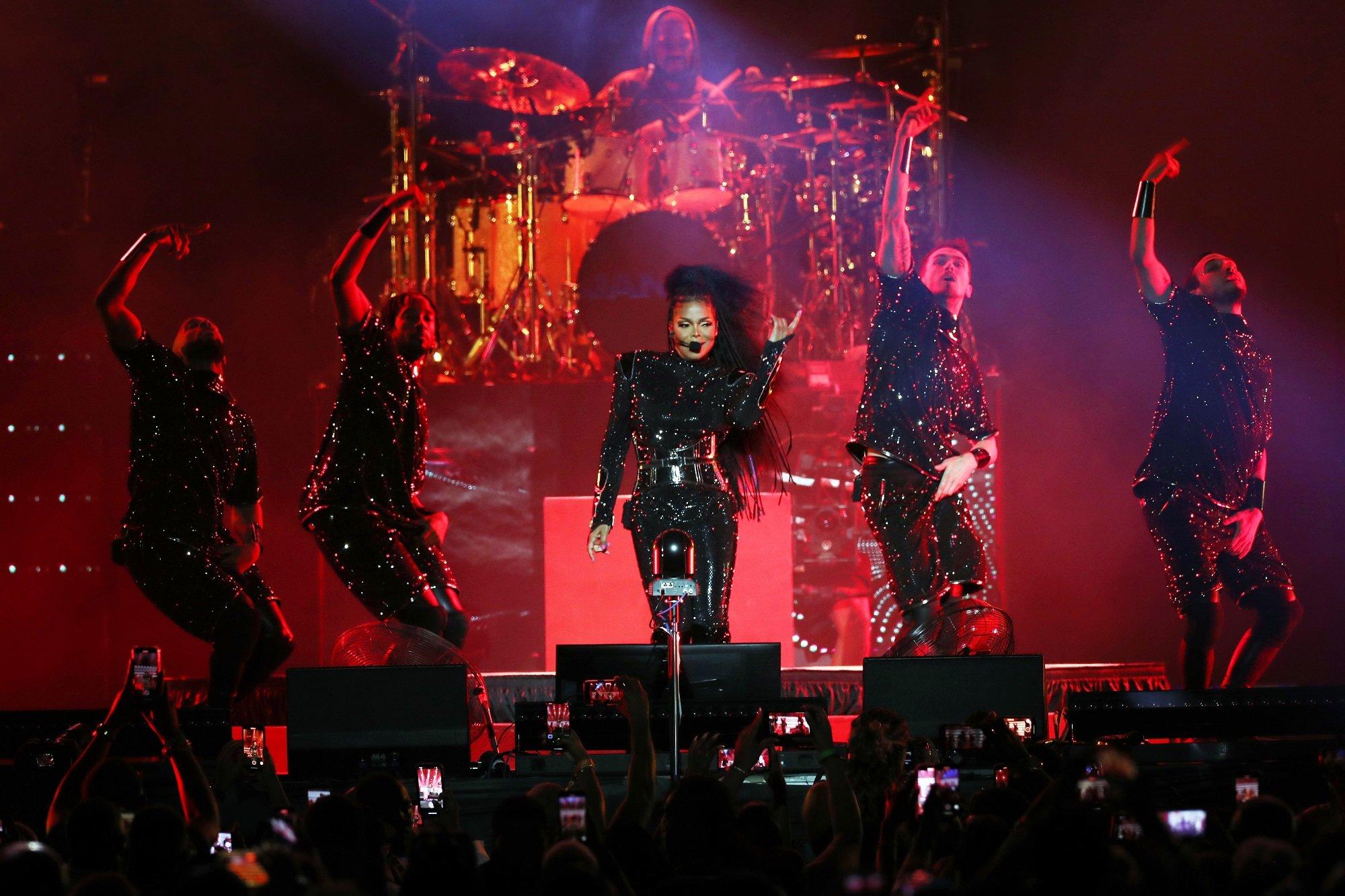
Photo Credit: Bennett Raglin/Getty Images for Essence
interview
Celebrating 30 Years Of Essence Fest: How New Orleans & Multi-Generational, Diasporic Talent Create The "Super Bowl Of Culture"
Ahead of the 30th Essence Festival Of Culture, held July 4-7 in New Orleans, GRAMMY.com spoke with executives and curators of the legendary celebration of Black excellence.
Every July, millions of Black people, specifically Black women, descend upon New Orleans for the Essence Festival of Culture (EFOC). Known for many years as the Essence Festival, the festival is a celebration of Black culture, community, and heritage. Since its inception in 1995 as a one-off event to commemorate the publication’s 25th anniversary, the festival has evolved into a diasporic jubilee, drawing in people of African descent from across the diaspora.
In addition to its global presence, the festival pours millions of dollars into the local New Orleans community, which has served as the festival's home for 30 years (with the exception of 2006, when the festival was held in Houston, because of Hurricane Katrina). In 2020, the festival was canceled because of the COVID-19 pandemic. Despite this, the annual festival continues to be one of the most sought-after and attended festivals in the United States.
This year’s Essence Festival of Culture will be held at the Superdome from July 4-7, replete with legendary and fast-rising talents. On July 5, Birdman & Friends will celebrate the 30th anniversary of Cash Money Records. The following day will feature a special performance by Charlie Wilson, while Usher will commemorate the 20th anniversary of Confessions.
Janet Jackson and Victoria Monét will headline the festival's final night, while Frankie Beverly and Maze close out the festival with the return of All-White Night. Other performers include The Roots featuring Mickey Guyton, Ari Lennox and T-Pain, Busta Rhymes, Raphael Saadiq, D-Nice featuring Shelia E, Big Boi, and many more.
Read more: Music Festivals 2024 Guide: Lineups & Dates For Lollapalooza, Coachella, Bonnaroo & Much More
EFOC has been compared to SXSW, Coachella, Austin City Limits, and other notable festivals, yet it stands out for its empowerment-centered approach. It is not simply a festival, it is a family reunion. The one festival in the United States that does not pander to or take advantage of Black audiences, but truly celebrates them and their achievements. Although music has always been an integral part of the festival’s ethos — Aretha Franklin and B.B. King performed at the first iteration — the festival excels in its multi-generational and interdisciplinary programming. On any given day, attendees can attend sessions on Black entrepreneurship, politics, mental health, and literature, as well as seminars focused on issues impacting the Black community.
There’s a reason why the festival is referred to as the party with a purpose. For decades, it has operated as a celebratory convening place for Black people, Black families, and Black communities. Now, more than ever, spaces like EFOC are needed, as the Black community experiences an onslaught of changes — from Historically Black Colleges and Universities in North Carolina and Tennessee being subject to intense government oversight, to Black women-owned venture capital firms being targeted by conservatives, and Black voting rights becoming at risk during an election year.
Ahead of the festival’s 30th celebration, Michael Barclay, Executive Vice President of Experiential for ESSENCE Ventures and Barkue Tubman Zawolo, Chief of Staff, Talent and Diasporic Engagement for Essence Ventures, spoke to the Recording Academy about the history, legacy, and future of the Essence Festival of Culture.
This interview has been edited for clarity.
Are you part of the generation that grew up with the Essence Festival of Culture? If so, how does it feel to be a part of it?
Barkue Tubman Zawolo: I'm originally from Liberia. And even being in Liberia, prior to my family moving to the U.S. in 1980, Essence was always a thing for my mom and my aunts. When we came here, fast forward to me, as an adult, [after] graduating college, I got into the music industry. I've managed artists that have gone through the Essence stages and pages in different ways.
Essence Fest has always been something that we were familiar with. I have to say, I had not really experienced Essence Fest until 2019 when Essence was actually a client. One of the things that I was doing [at that point] was integrating the Diaspora and African creatives within the festival in fashion and music.
To be in the role that I'm in right now and to be on a team with people who have been a part of Essence for a long time…. Essence seems to be ingrained in all of our fabric. [What] started as a music festival now is the Super Bowl of Culture that is the Essence Festival of Culture. To be on the team that helps bring this to life for our community is a daunting but rewarding task all in the same.
Essence is something that I don't think anybody in our community takes lightly. Even our partners understand the value of it. We certainly understand that we serve the Essence-inverse and, and we are in service to this community. It is a huge honor to be able to be a part of the team that brings this to life and, and, and constantly hear what it means to the community globally too.
One thing that I admired, especially about last year's festival, was GU Kickback — a music event hosted by Girls United, the publication’s Gen Z vertical. I saw a number of local artists from New Orleans, such as 504ICYGRL. ESSENCE just released a series of cover stories celebrating the 30 year relationship between the publication and New Orleans; how do you highlight the city and their history?
Michael Barclay: As somebody who's worked in experiential, creating gatherings and experiences for almost 25 years now, the venue is always important when you're trying to set the box where you are creating for your community, for your audience. New Orleans has been that backdrop for us for almost 30 years now.
New Orleans is the convergence of our mission, our brand, in a city that is perfectly matched for that energy. New Orleans is as much a part of Essence Festival of Culture as Essence Magazine is to Essence Festival.
It is very much a partnership that has created this cultural movement. To be more inclusive, and highlight more of those local relationships and talent is very intentional. It has been something that we have put a lot of energy and effort into over the last couple of years.
This will be my third festival this year. I think Barkue, you started maybe a year or two before me. We're a fairly new crew that is working to help grow and reshape and solidify those relationships. Even with how we handle the management of the festival.
Our VP of Essence Festival, Hakeem Holmes is a hometown boy from New Orleans. He's the pride and joy. They love to see him coming. He's always enlightening us on the things that we need to be focused on for the city and how we make the best partnership and make the best impact on the area.
It was intentional what you saw last year. It's intentional this year. We dedicated our entire festival edition of the magazine as a love letter to New Orleans. It's a symbiotic relationship that is one of the key reasons why this festival is the Super Bowl of Culture.
I would love to hear about the talent aspect of the festival. Last year, Megan Thee Stallion headlined. In previous years, Beyoncé and Prince have served as headliners. What is the formula between balancing local talent, national talent and diasporic talent at the festival?
Zawolo: As we grow the festival, the intentionality becomes even more and more important. And, what we do in understanding where we are as a brand.
We're 30 years into the festival, the brand is 55 years. What's traditionally known as the Essence Woman is now bringing her daughter. It's multi-generational. We also know that the world is as big as your cell phone, so people are now exposed to different types of content and music.
We see the influence of Afrobeats and Caribbean music. We are intentional about making sure that every night really speaks to multiple generations, but it's anchored in a generation. It's like, who's bringing, who to the concert on Friday? Is it the daughter bringing her mama?
It's anchored in that younger demo, but we're going to make sure that they're going to have a collective good time there. Saturday is usually our heaviest night. We have our living legends that show up there; that really cuts across generations. This is anybody can bring anybody, but let me tell you, you're going to be able to teach each other, connect with each other with the different groupings of talent that we have.
We try to make sure that there is something that speaks to us, but that that connects with the diaspora on as many nights as possible. Sometimes it's not because they're from a different country, but because we know the music also resonates.
If you think of Janet Jackson, you can go anywhere in the world. She can check off that box, although she's not from there. You can create those ties, but we also are intentional about having Ayra Starr and Machel Montano. Last year we had Tems and Wizkid. The goal is to continue to grow what that looks like, because we are a global brand and that is our diasporic and global intent in connecting the global Black community is really important.
We are intentionally multi-generational. We intentionally lead into where a multitude of generational communities can come together and have fun together. There is something for everybody. We have a unique opportunity with Essence as the brand grows to be able to not only speak to what they want to call the aunties, I call the punties. I also think that this is where we get to educate the next generation on where we're coming from. We also get to learn from them on where they are and where they want to go.
What a beautiful way to kind of tie all of these connections. Last year, the festival celebrated 50 years of hip-hop; this year you're celebrating the 30th anniversary of the festival. What is the intention behind this year’s music programming?
Zawolo: Paying homage to people who had done some historical things on our stages. We have Janet [Jackson] back. People are like, “Oh, we saw Janet two years ago,” but Janet is also one of the highest sellers in the festival's history.
If we're going to celebrate, let's celebrate, because we know Janet never disappoints. We also want to lean into some of the [older] talent, like Charlie Wilson, Uncle Charlie. He's graced that stage so many times, but yet it's still very relevant. Using this moment to reignite things that we've done in the past and bring them back to life that we know the audience missed.
Frankie Beverly, who is going to come, this is probably going to really be his last performance. The passing of the torch. This year was about having to be intentional about what other milestones are happening that are important to this culture. Cash Money is also celebrating 30 years. Who better, right?
Essence has been in New Orleans for 30 years. Cash Money and crew are from New Orleans. Juvenile just got the key to the city from the mayor. We want to honor and celebrate him, but we also want to recognize the influence that this group of very creative, entrepreneurial, rappers and artists have had on culture, because there was a time where we all were backing that ass up.
Making sure we highlighted milestones, connecting with people who have historically been a part of making history with us, introducing some new ones — that's what we have to do. We have to set up now for the next 30 years. We want to go to the soul of what appeals to our audience, and we're really all about good music.
I think the 30th year just continues to do what we do. As we look to grow and connect demos, Megan Thee Stallion is a very viable option because again, the daughter now is going to bring the mama. Intergenerational diasporic and connecting demos, I think that only happens at the Superdome. That's also happening in the convention center, which I believe is honestly the soul of the festival.
What are your hopes and aspirations for the next 30 years of the Essence Festival of Culture? Will Essence Fest always be in New Orleans? Are we going to have an Essence Fest in Lagos, Nigeria?
Barclay: Being on this side of [EFOC], seeing the true impact of the festival and how it impacts the communities, how it impacts the folks that come to New Orleans, and now, because we've expanded to our virtual audience, the 1.7 million that are viewing around the world, my hope for the festival is that we continue to show up where our community needs us.
We're going to be in New Orleans. We're going to be in our official world as we call it. If you can't make it to New Orleans, you can tune into Essence.com and you can see what's going on there. We are creating virtual experiences, AR experiences, VR experiences, all those things, so really keeping up with the way that people continue to connect with each other, whether they're physically in the same place or halfway across the world.
I think that type of innovation is what I want to continue to see us do and allow us to create that joy that we generate in New Orleans and wherever it's needed for our community.
PRIDE & Black Music Month: Celebrating LGBTQIA+ & Black Voices
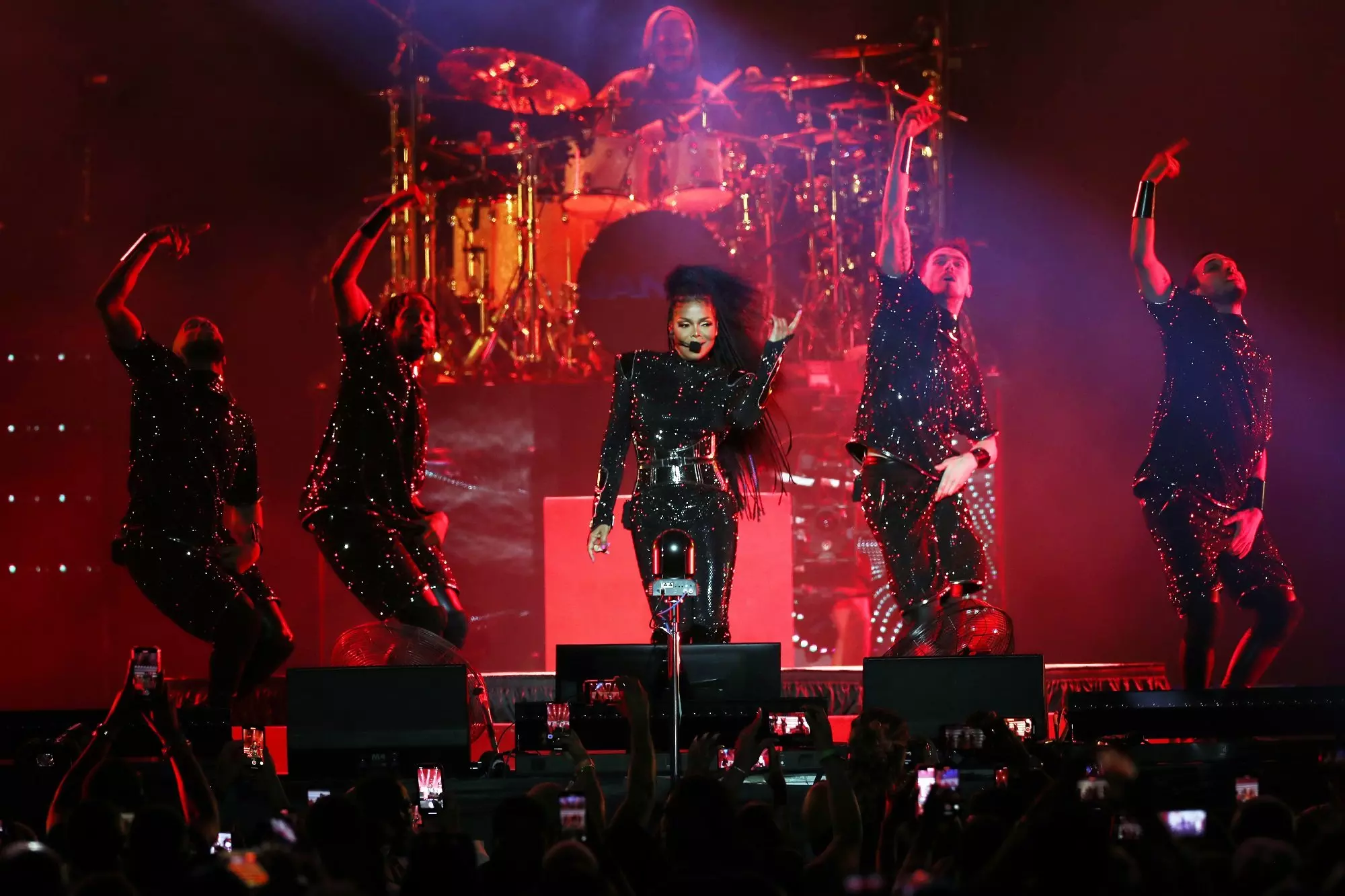
Celebrating 30 Years Of Essence Fest: How New Orleans & Multi-Generational, Diasporic Talent Create The "Super Bowl Of Culture"
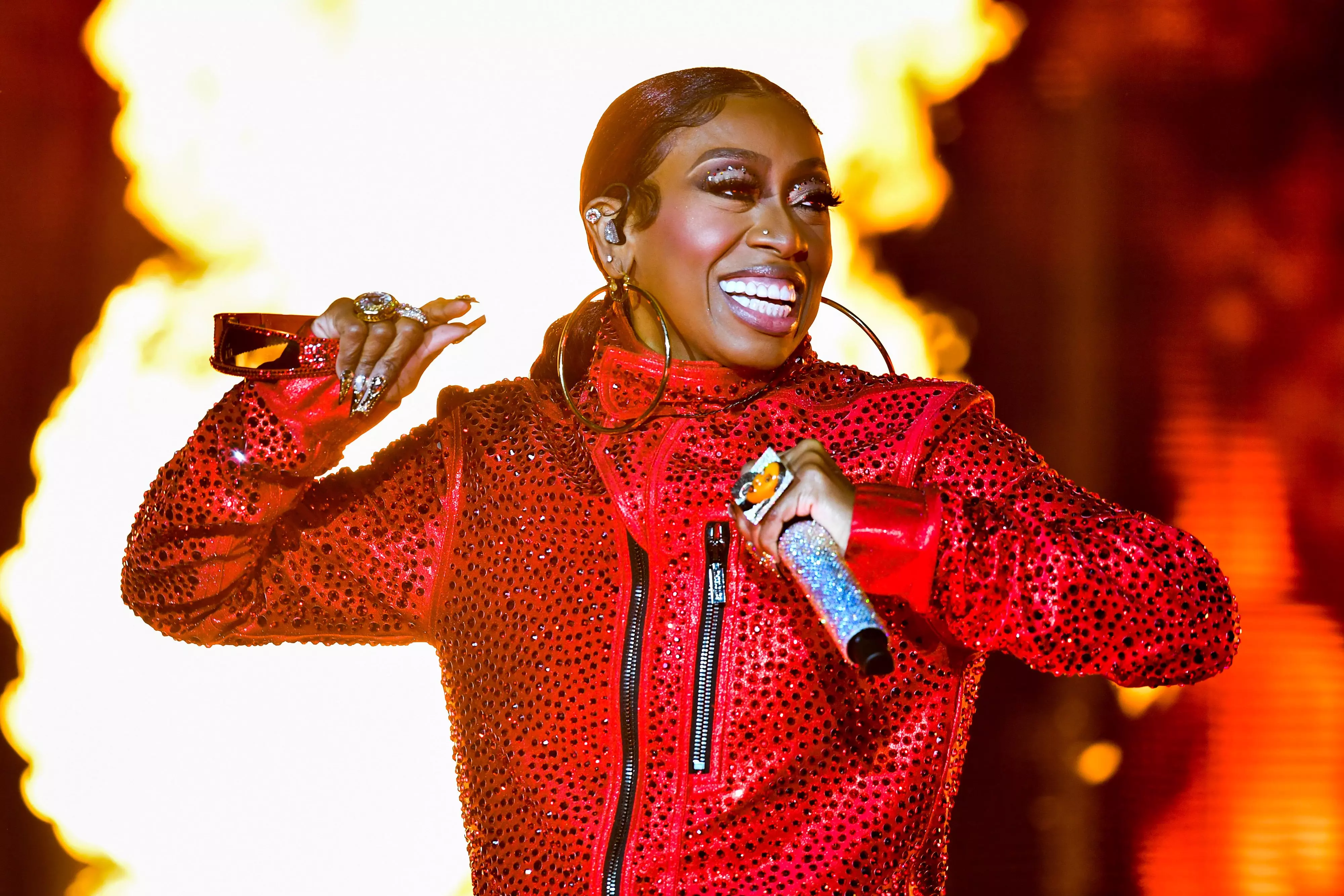
Celebrating Missy Elliott: How The Icon Changed The Sound, Look & Language Of Hip-Hop

Tekno Talks New Music, Touring America & His "Elden Ring" Obsession

5 LGBTQIA+ Record Labels To Check Out: Get Better Records, So Fierce! And Others
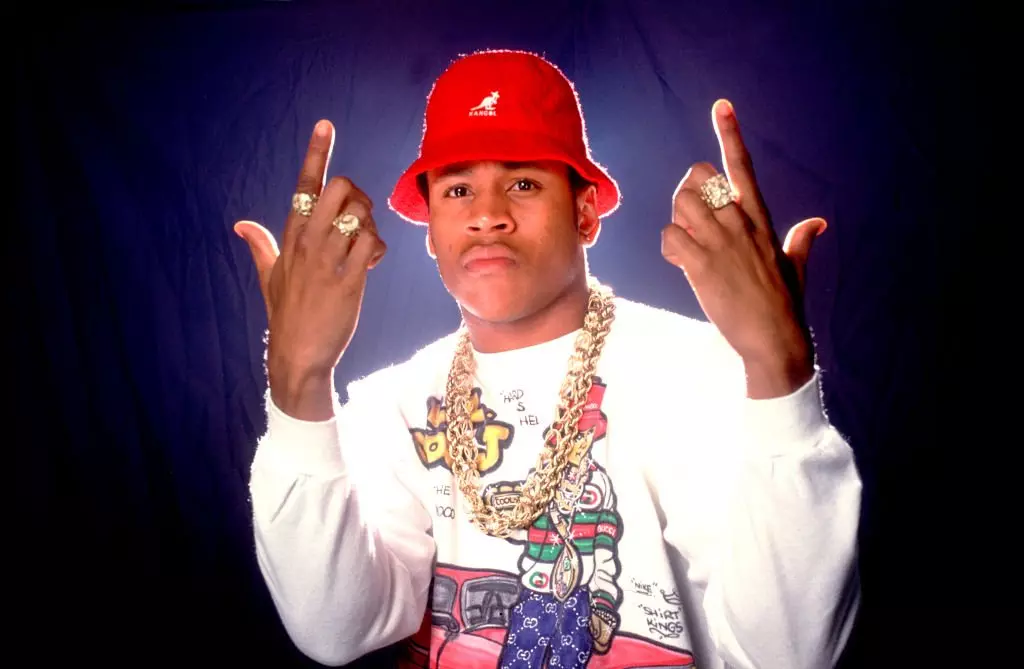
Celebrate 40 Years Of Def Jam With 15 Albums That Show Its Influence & Legacy
.jpg)
Photo: Zeus Lopez
feature
Revisiting 'El Nervio Del Volcán' At 30: How Caifanes' Final Album Became A Classic In Latin American Rock
Released in June 1994, 'El Nervio Del Volcán' was a high point of the rock en español explosion and a serious evolution in the Mexican band's sound. Decades after its release, GRAMMY.com explores the story behind and impact of Caifanes' legendary LP.
As its title suggests, the final album from iconic Mexican rock band Caifanes heralded an explosive new evolution in hybrid rock. El Nervio Del Volcán ("nerve of the volcano" in English), was the culmination of a years-long quest by the band to alchemize modern rock and Latin American music.
Released June 29, 1994, El Nervio Del Volcán represents a high point of Mexico’s rock en español explosion. The 11-track album — the band's fourth release — saw Califanes continuing to explore the sounds of Mexico and Latin America, while broadening their sonic palette with jazz and country.
Since their formation in 1987, Caifanes had been working to refine a sound that was both commercially successful, highly original, and beloved by critics and fans alike. For their efforts, El Nervio became the second Spanish-language rock album to chart on the Billboard Latin 50. Rolling Stone, which rarely gave Spanish-language music column inches, gave the album a glowing review. Caifanes became the first Mexican band to play on MTV’s "Unplugged" in October 1994. The next year, they opened for the Rolling Stones in Mexico City.
While Caifanes might have been the leading band of Mexico’s rock en español movement, they were part of a cohort that included bands like Café Tacuba, Maldita Vecindad, and Fobia — which were experimenting with new fusions of traditional Latin American and rock sounds. Caifanes was at the vanguard of the Mexico City-centric movement, and El Nervio showcased the band's skill in developing "strong hits, and experimental things, which I think kind of worked," music journalist Ed Morales tells GRAMMY.com.
In an interview, Mexican rock historian Federico Rubli calls the record "a very important album, that maybe in its time wasn’t sufficiently appreciated. Even today, 30 years later, it’s difficult to recognize how great a work it was." If the crossover success weren't appreciation enough, El Nervio is notable for the way in which it set a high standard in songwriting and production for other bands that followed.
Caifanes was daring beyond their sonic experimentation. Like most Mexican rock bands at the time, their music was prohibited from being played on the radio and they risked arrest for performing. By the time of their first concert at the legendary Rockotitlan festival in Mexico City in 1987, though, there was no stopping what would soon become a new rock movement. The following year, they broke through the government’s music blockade when their first single, "Mátenme Porque Me Muero" ("Kill me because I am dying"), hit the airwaves.
The follow-up single, "La Negra Tomasa," a post-punk inflected cumbia rocker that became a smash hit across the country, selling a record 500,000 copies. Their self-titled debut album was released shortly thereafter, with the band members looking like extras from a movie about goth subculture on the cover. Their third album, 1992’s El Silencio, found the band more musically confident than ever before. Producer Adrian Below — the former guitarist and frontman of King Crimson who had also played with David Bowie and Talking Heads — helped the band expand their musical palette with "cotton-candy high notes, rumbling ocean rhythms with upsurges that bellows like sea elephants," music critic Chuck Eddy wrote.
Everything changed for the rock en español movement in 1993, when the pop-rock outfit Maná, which played a syrupy mix of tropical-influenced music, sold a million copies of its second album, ¿Dónde Jugarán Los Niños? Record labels were suddenly pursuing the next hit-making Latin band and BMG, which had signed most of the major rock en español bands, considered Caifanes its star rockers.
The band had fractured as they prepared to go back to the studio, with original bassist Sabo Romo and keyboardist Diego Herrera leaving the group. With the increased backing by their label, the trio of lead singer/songwriter and guitarist Saúl Hernández, Argentine-born guitarist Alejandro Marcovich, and drummer Alfonso André traveled to Burbank, California, to record El Nervio Del Volcán GRAMMY-winning producer Greg Ladanyi (known for his work with Toto, Fleetwood Mac, and The Church) was brought into the O’Henry Sound Studios, along with a few special guests. Famed trumpeter Jerry Hey (known for his work on Michael Jackson’s "Thriller") and Graham Nash both appear on El Nervio.
The songs that Hernández largely wrote and that the other band members would coalesce around were heavily influenced by Mexican folkloric sounds, though Marcovich in particular introduced a variety of Latin American sounds with his guitar. Throughout El Nervio, Caifanes flows effortlessly between genres: a bit of rustic son huasteco ("La llorona"), jolts of metal ("El Animal"), and Caribbean rhythms ("Aviéntame").
Rubli tells GRAMMY.com that the album was notably different from the band’s previous releases, largely due to Marcovich being given leeway with the guitar arrangements. "El Nervio Del Volcán is a much more rounded album, more integrated, with a sequence in each song that is, you might say, more logical," he says in Spanish. "And a lot of that is due to the liberty that Alejandro had to arrange them as he wanted."
Soul-stirring anthem "Afuera" was an unusual choice for a lead single — it features an instrumental guitar interlude that lasts for more than a minute — but proved brilliant. Even Markovich, the guitarist who wrote the interlude, was dubious about its commercial potential.
"I never could have imagined it would be a single," he said in 2022 on the podcast "Cuéntame Un Disco." "I even told the record company that they might want to do a more radio friendly version without it, but they left it and it worked."
Today the song is popular among musicians on YouTube precisely because of its interlude.
Second single "Aqui No Es Asi" was also a hit. Marcovich, again on the podcast, said he was writing melodies on the guitar when he found an unusual rhythm "between Caribbean and Andean." "It was a strange mix," he said.
Hernández has been called the "poet laureate of Mexican rock," and has often weaved social themes and indigenous mysticism into the lyrics of his songs. In the propulsive "Aqui no es asi," Hernandez obliquely refers to two different places — one materialistic and out of touch with spirituality, and the other a land "where blood is sacrificed for love." The song has been interpreted as a criticism of Eurocentric values that have marginalized more indigenous ones.
The album slows down considerably with the acoustic, melancholic hymn "Ayer me dijo un ave." Now one of the band’s signature songs, the song is about strength in the face of adversity. Its lyrics are heavy with surrealistic imagery: "Yesterday a bird told me while flying where there is no heat," Hernández sings. "That the long-suffering are not resurrected in dreams."
Many of the other songs have become classics in Mexico and among Spanish-speakers in the U.S. Highlights include the full-throttle tropical-tinged "Aviéntame"; "Pero Nunca Me Caí," which features Nash on harmonica; and "Quisiera Ser Alcohol," a jazz-influenced lament with trumpet from Hey and a sumptuous fretless bass from guest Stuart Hamm.
More Sounds From Latin America & Beyond
.webp)
Revisiting 'El Nervio Del Volcán' At 30: How Caifanes' Final Album Became A Classic In Latin American Rock
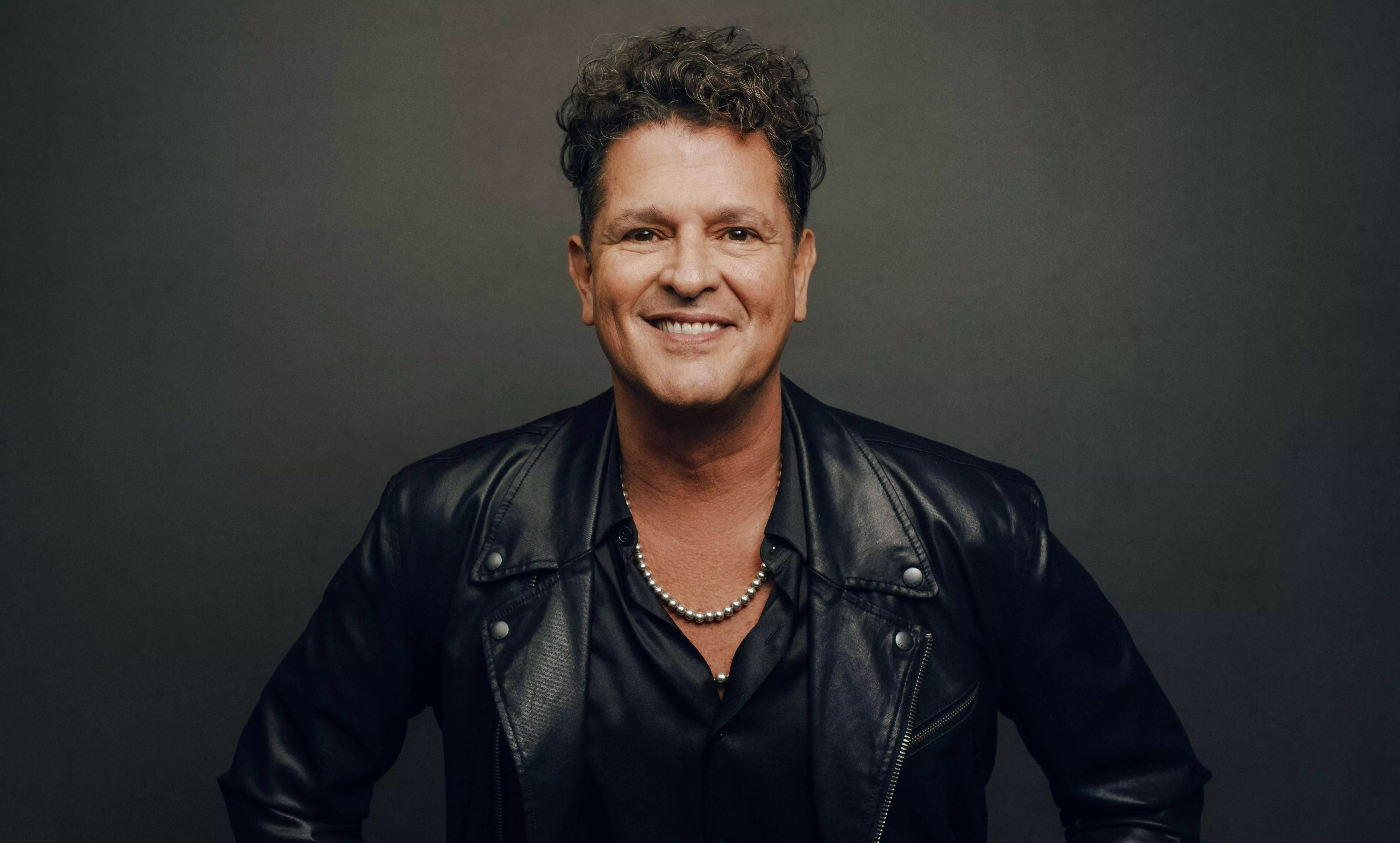
Carlos Vives Named The 2024 Latin Recording Academy Person Of The Year: What To Know About The Latin Music Icon
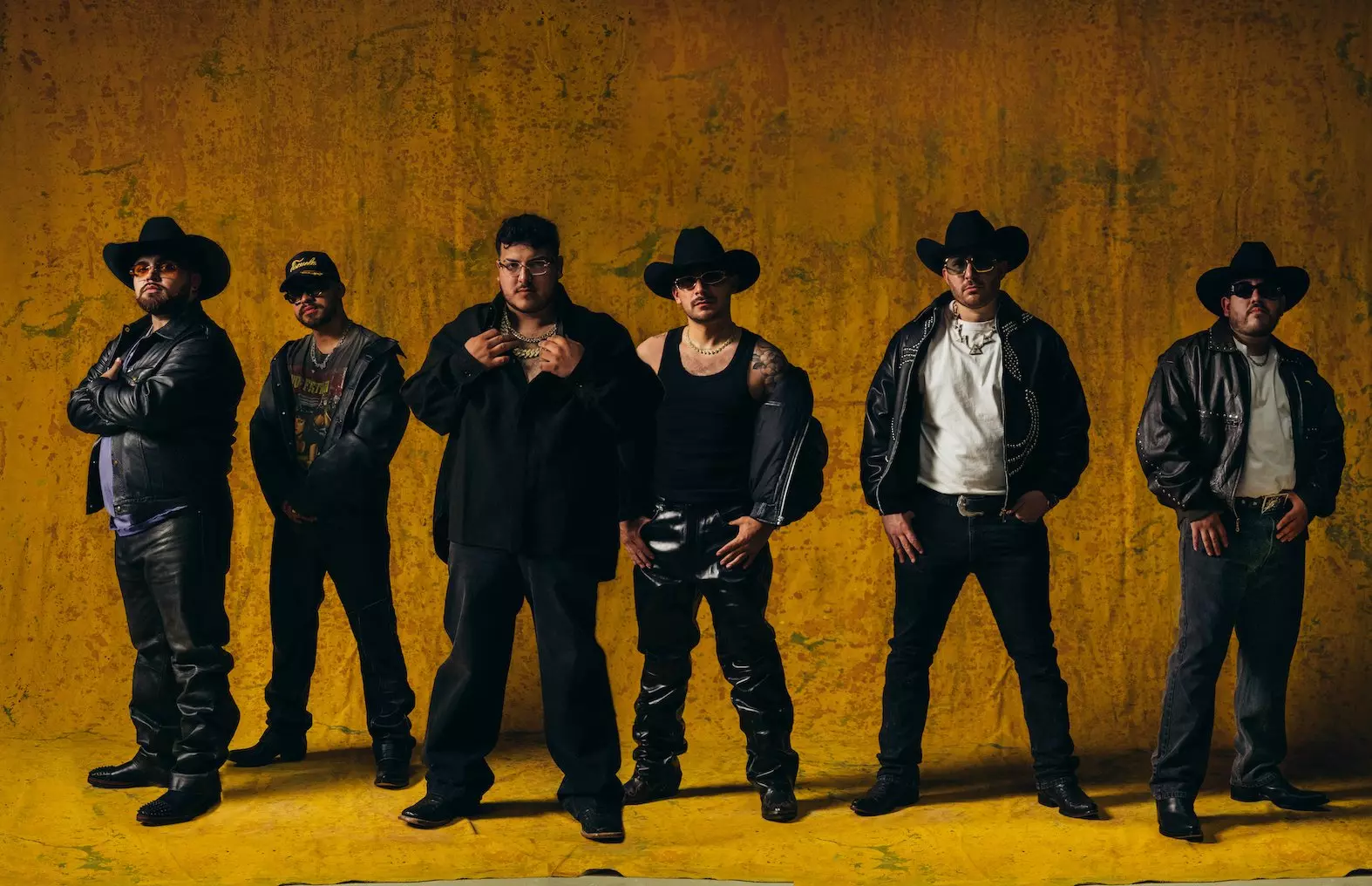
Grupo Frontera On 'Jugando A Que No Pasa Nada' & Fully Expressing Themselves: "This Album Was Made From The Heart"

5 Artists Leading A New Wave Of Latin Trip-Hop & Downtempo: Céu, Natalia Clavier & More
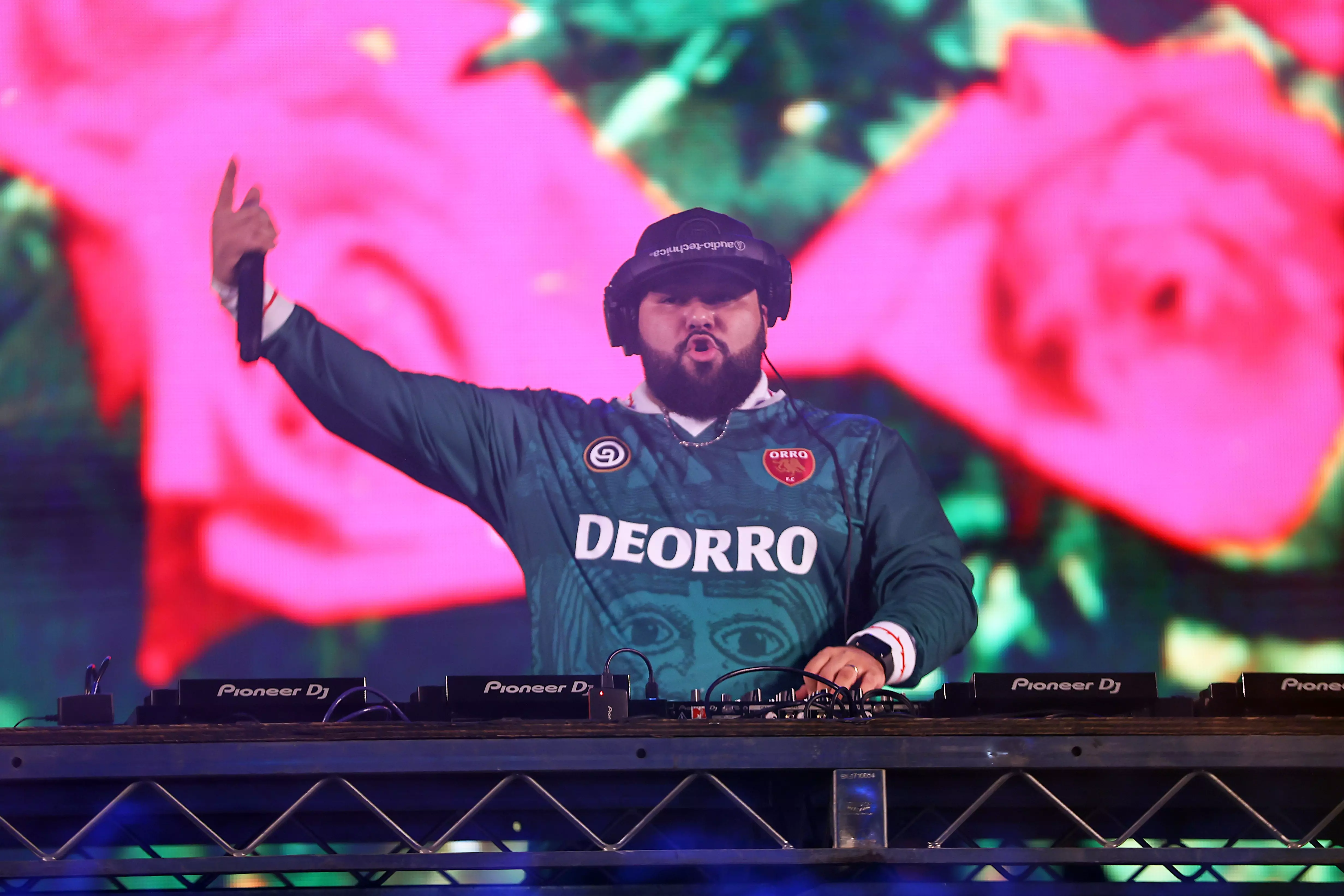
8 Essential Latin Electronic Releases: Songs And Albums From Bizarrap, Arca & More
Rafael Catana, an influential folk-rock musician in Mexico City who has hosted a music show on government-funded radio since 1997, says Caifanes' last album "arrived at a crucial moment in Mexican history" when the country was undergoing a massive social and economic transformation. Both sonically and in its production, El Nervio reflected the conflict between Mexico's interest in transnational capitalism and its underclass.
In the early 1990s, elites had opened the country to a flood of foreign corporate investment with the North American Free Trade Agreement. On Jan. 1, 1994, an armed indigenous uprising against those policies by the Ejército Zapatista de Liberación Nacional challenged the government unlike any other group had attempted in decades. (Security forces had warned against political dissidence when they massacred student protesters in Mexico City in 1968 and launched a dirty war to round up "subversives" and marginalize the counterculture, including rock bands).
While El Nervio doesn’t explicitly mention any of these historical points, it is clearly a product of the era, filled with evocations of Indigenous musical traditions despite being produced by a major corporate label. During the tour in support of the album, the band made it clear that they were on the side of Mexico’s most oppressed class, with footage of Indigenous villages and archeological sites shown during their concerts. Hernández would sometimes call on audiences to support Mexico’s native people.
Backstage, the relationship between Marcovich and Hernández became impossible and contributed to the breakup of the band. The rupture between them would become a subject of headlines in the media. Though the exact details of their conflict remain vague, the band played their final show on Aug. 18, 1995, in San Luis Potosí. A legal dispute over the name Caifanes endured for years.
By the time Caifanes broke up, rock en español was entering a new phase led by the indie-folkloric experimentation of Café Tacuba. Other musical trends also started emerging: the rap-rock of Molotov, the electro of Plastilina Mosh, the commercial explosion of Juanes' tropical pop, the Caribbean alternative rock of Aterciopelados.
In the interim, Hernandez formed a new band with André. Their Jaguares channeled a more aggressive sound, and their 2008 album 45, took home a golden gramophone for Best Latin Rock or Alternative Album at the 2009 GRAMMYs. In 2011, the original members of Caifanes reunited to play Coachella.
But the truce between Hernández and Marcovich didn’t last, and the guitarist once again left the band. A reunited Caifanes, with original members Hernandez and André, are on tour in 2024 with fellow Mexico City rockers Café Tacuba.
Mexican music journalist David Cortes, who has written several books on Latin American music, said the band was at their creative peak with El Nervio Del Volcán and had established a striking balance between traditional music and foreign sounds. Ultimately, though, the break-up of the band limited its influence over the years.
"They wanted to go further," he says in Spanish. "And there are hints of where they might have gone."
Latest News & Exclusive Videos

Behind Ryan Tedder's Hits: Stories From The Studio With OneRepublic, Beyoncé, Taylor Swift & More

Crowder Performs "Grave Robber"

NCT 127 Essential Songs: 15 Tracks You Need To Know From The K-Pop Juggernauts

5 Rising L.A. Rappers To Know: Jayson Cash, 310babii & More

Why Elliott Smith's 'Roman Candle' Is A Watershed For Lo-Fi Indie Folk
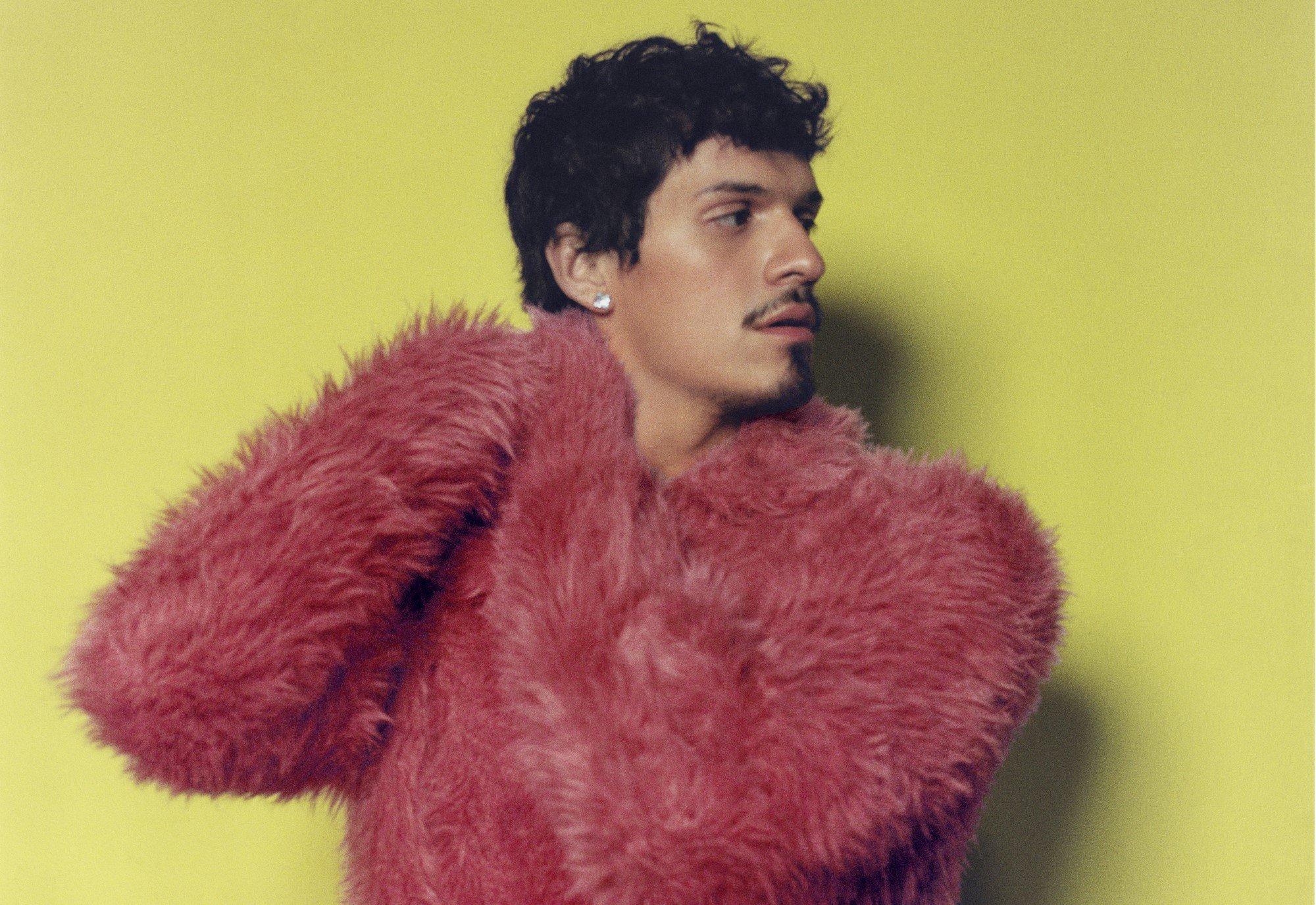
Photo: Aitor Laspiur
interview
Omar Apollo Embraces Heartbreak And Enters His "Zaddy" Era On 'God Said No'
Alongside producer Teo Halm, Omar Apollo discusses creating 'God Said No' in London, the role of poetry in the writing process, and eventually finding comfort in the record's "proof of pain."
"Honestly, I feel like a zaddy," Omar Apollo says with a roguish grin, "because I'm 6'5" so, like, you can run up in my arms and stay there, you know what I mean?"
As a bonafide R&B sensation and one of the internet’s favorite boyfriends, Apollo is likely used to the labels, attention and online swooning that come with modern fame. But in this instance, there’s a valid reason for asking about his particular brand of "zaddyhood": he’s been turned into a Bratz doll.
In the middle of June, the popular toy company blasted a video to its nearly 5 million social media followers showing off the singer as a real-life Bratz Boy — the plastic version draped in a long fur coat (shirtless, naturally), with a blinged-out cross necklace and matching silver earrings as he belts out his 2023 single "3 Boys" from a smoke-covered stage.
The video, which was captioned "Zaddy coded," promptly went viral, helped along by an amused Apollo reposting the clip to his own Instagram Story. "It was so funny," he adds. "And it's so accurate; that's literally how my shows go. It made me look so glamorous, I loved it."
The unexpected viral moment came with rather auspicious timing, considering Apollo is prepping for the release of his hotly anticipated sophomore album. God Said No arrives June 28 via Warner Records.
In fact, the star is so busy with the roll-out that, on the afternoon of our interview, he’s FaceTiming from the back of a car. The day prior, he’d filmed the music video for "Done With You," the album’s next single. Now he’s headed to the airport to jet off to Paris, where he’ll be photographed front row at the LOEWE SS25 men’s runway show in between Sabrina Carpenter and Mustafa — the latter of whom is one of the few collaborators featured on God Said No.
Apollo’s trusted co-writer and producer, Teo Halm, is also joining the conversation from his home studio in L.A. In between amassing credits for Beyoncé (The Lion King: The Gift), Rosalía and J Balvin (the Latin GRAMMY-winning "Con Altura"), SZA ("Notice Me" and "Open Arms" featuring Travis Scott) and others, the 25-year-old virtuoso behind the boards had teamed up with Apollo on multiple occasions. Notably, the two collabed on "Evergreen (You Didn’t Deserve Me At All)," which helped Apollo score his nomination for Best New Artist at the 2023 GRAMMYs.
In the wake of that triumph, Apollo doubled down on their creative chemistry by asking Halm to executive produce God Said No. (The producer is also quick to second his pal’s magnetic mystique: "Don't get it twisted, he's zaddy, for sure.")
Apollo bares his soul like never before across the album’s 14 tracks, as he processes the bitter end of a two-year relationship with an unnamed paramour. The resulting portrait of heartbreak is a new level of emotional exposure for a singer already known for his unguarded vulnerability and naked candor. (He commissioned artist Doron Langberg to paint a revealing portrait of him for the cover of his 2023 EP Live For Me, and unapologetically included a painting of his erect penis as the back cover of the vinyl release.)
On lead single "Spite," he’s pulled between longing and resentment in the wake of the break-up over a bouncing guitar riff. Second single "Dispose of Me" finds Apollo heartsick and feeling abandoned as he laments, "It don’t matter if it’s 25 years, 25 months/ It don’t matter if it’s 25 days, it was real love/ We got too much history/ So don’t just dispose of me."
Elsewhere, the singer offers the stunning admission that "I would’ve married you" on album cut "Life’s Unfair." Then, on the very next song — the bumping, braggadocious "Against Me" — Apollo grapples with the reality that he’s been permanently altered by the love affair while on the prowl for a rebound. "I cannot act like I’m average/ You know that I am the baddest bitch," he proclaims on the opening verse, only to later admit, "I’ve changed so much, but have you heard?/ I can’t move how I used to."
More Omar Apollo News & Videos

Omar Apollo Embraces Heartbreak And Enters His "Zaddy" Era On 'God Said No'
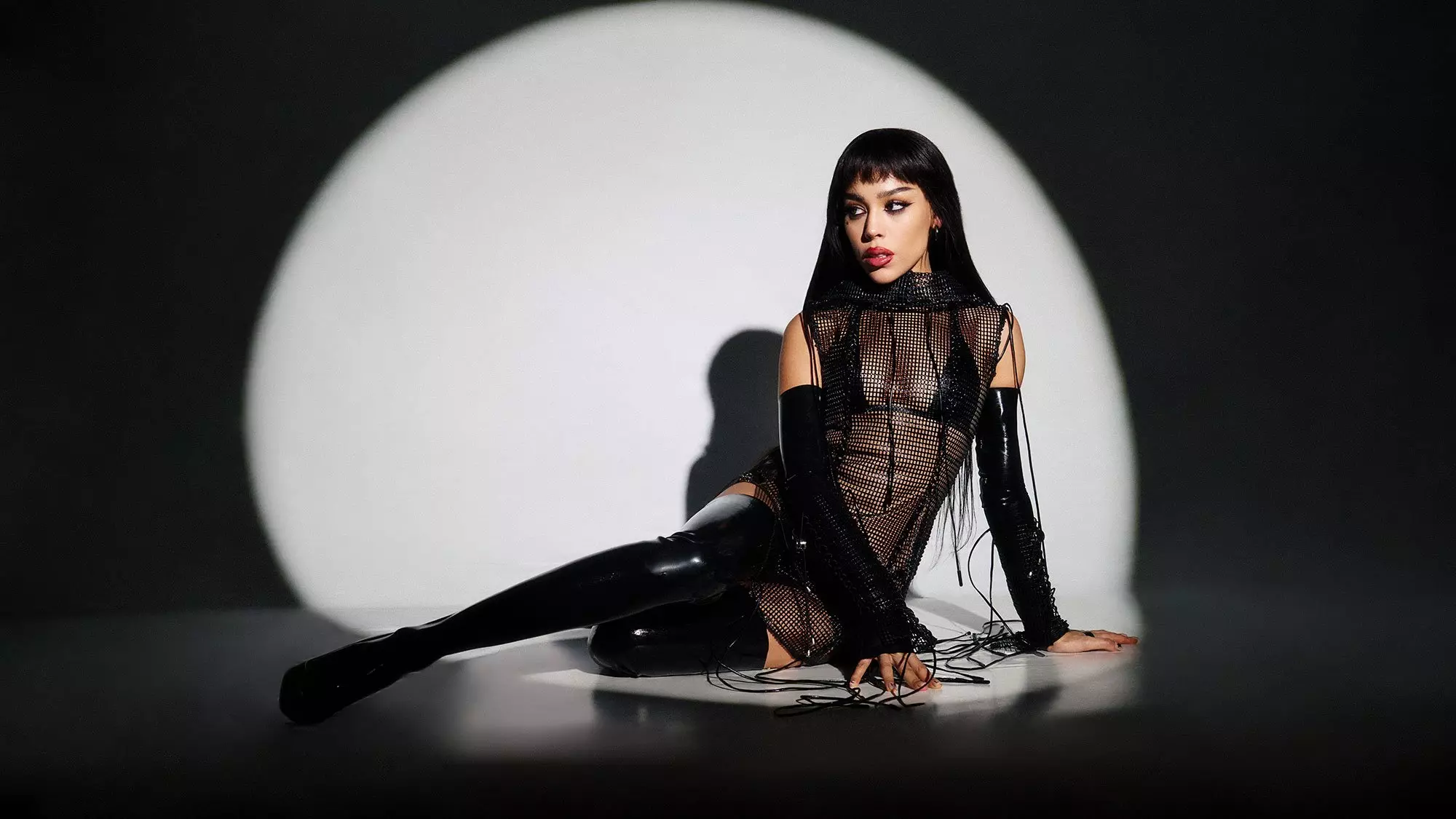
How Danna Paola Created 'CHILDSTAR' By Deconstructing Herself
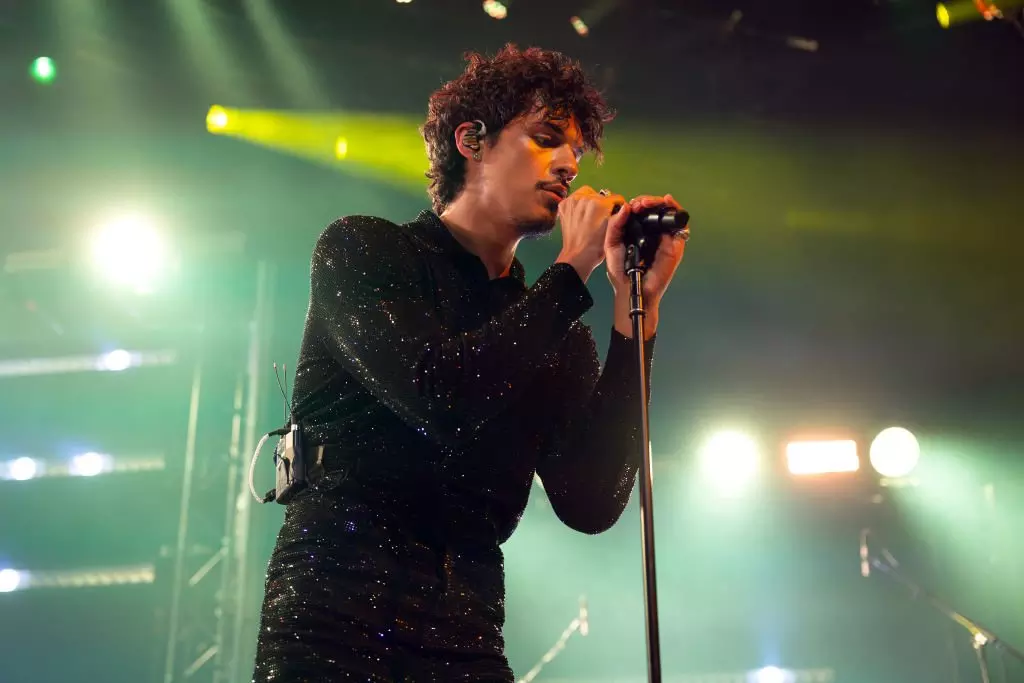
On Omar Apollo's New EP 'Live for Me,’ Limitless Experimentation Created Catharsis

Listen To GRAMMY.com's LGBTQIA+ Pride Month 2023 Playlist Featuring Demi Lovato, Sam Smith, Kim Petras, Frank Ocean, Omar Apollo & More

Omar Apollo On “Evergreen,” Growth & Longing
Given the personal subject matter filling God Said No — not to mention the amount of acclaim he earned with Ivory — it would be understandable if Apollo felt a degree of pressure or anxiety when it came to crafting his sophomore studio set. But according to the singer, that was entirely not the case.
"I feel like I wouldn’t be able to make art if I felt pressure," he says. "Why would I be nervous about going back and making more music? If anything, I'm more excited and my mind is opened up in a whole other way and I've learned so much."
In order to throw his entire focus into the album’s creation, Apollo invited Halm to join him in London. The duo set up shop in the famous Abbey Road Studios, where the singer often spent 12- to 13-hour days attempting to exorcize his heartbreak fueled by a steady stream of Aperol spritzes and cigarettes.
The change of scenery infused the music with new sonic possibilities, like the kinetic synths and pulsating bass line that set flight to "Less of You." Apollo and Halm agree that the single was directly inspired by London’s unique energy.
"It's so funny because we were out there in London, but we weren't poppin' out at all," the Halm says. "Our London scene was really just, like, studio, food. Omar was a frickin' beast. He was hitting the gym every day…. But it was more like feeding off the culture on a day-to-day basis. Like, literally just on the walk to the studio or something as simple as getting a little coffee. I don't think that song would've happened in L.A."
Poetry played a surprisingly vital role in the album’s creation as well, with Apollo littering the studio with collections by "all of the greats," including the likes of Ocean Vuong, Victoria Chang, Philip Larkin, Alan Ginsberg, Mary Oliver and more.
"Could you imagine making films, but never watching a film?" the singer posits, turning his appreciation for the written art form into a metaphor about cinema. "Imagine if I never saw [films by] the greats, the beauty of words and language, and how it's manipulated and how it flows. So I was so inspired."
Perhaps a natural result of consuming so much poetic prose, Apollo was also led to experiment with his own writing style. While on a day trip with his parents to the Palace of Versailles, he wrote a poem that ultimately became the soaring album highlight "Plane Trees," which sends the singer’s voice to new, shiver-inducing heights.
"I'd been telling Teo that I wanted to challenge myself vocally and do a power ballad," he says. "But it wasn't coming and we had attempted those songs before. And I was exhausted with writing about love; I was so sick of it. I was like, Argh, I don't want to write anymore songs with this person in my mind."
Instead, the GRAMMY nominee sat on the palace grounds with his parents, listening to his mom tell stories about her childhood spent in Mexico. He challenged himself to write about the majestic plane tree they were sitting under in order to capture the special moment.
Back at the studio, Apollo’s dad asked Halm to simply "make a beat" and, soon enough, the singer was setting his poem to music. (Later, Mustafa’s hushed coda perfected the song’s denouement as the final piece of the puzzle.) And if Apollo’s dad is at least partially responsible for how "Plane Trees" turned out, his mom can take some credit for a different song on the album — that’s her voice, recorded beneath the same plane tree, on the outro of delicate closer "Glow."
Both the artist and the producer ward off any lingering expectations that a happy ending will arrive by the time "Glow" fades to black, however. "The music that we make walks a tightrope of balancing beauty and tragedy," Halm says. "It's always got this optimism in it, but it's never just, like, one-stop shop happy. It's always got this inevitable pain that just life has.
"You know, even if maybe there wasn't peace in the end for Omar, or if that wasn't his full journey with getting through that pain, I think a lot of people are dealing with broken hearts who it really is going to help," the producer continues. "I can only just hope that the music imparts leaving people with hope."
Apollo agrees that God Said No contains a "hopeful thread," even if his perspective on the project remains achingly visceral. Did making the album help heal his broken heart? "No," he says with a sad smile on his face. "But it is proof of pain. And it’s a beautiful thing that is immortalized now, forever.
"One day, I can look back at it and be like, Wow, what a beautiful thing I experienced. But yeah, no, it didn't help me," he says with a laugh.
Latest News & Exclusive Videos

Behind Ryan Tedder's Hits: Stories From The Studio With OneRepublic, Beyoncé, Taylor Swift & More

Crowder Performs "Grave Robber"

NCT 127 Essential Songs: 15 Tracks You Need To Know From The K-Pop Juggernauts

5 Rising L.A. Rappers To Know: Jayson Cash, 310babii & More

Why Elliott Smith's 'Roman Candle' Is A Watershed For Lo-Fi Indie Folk

